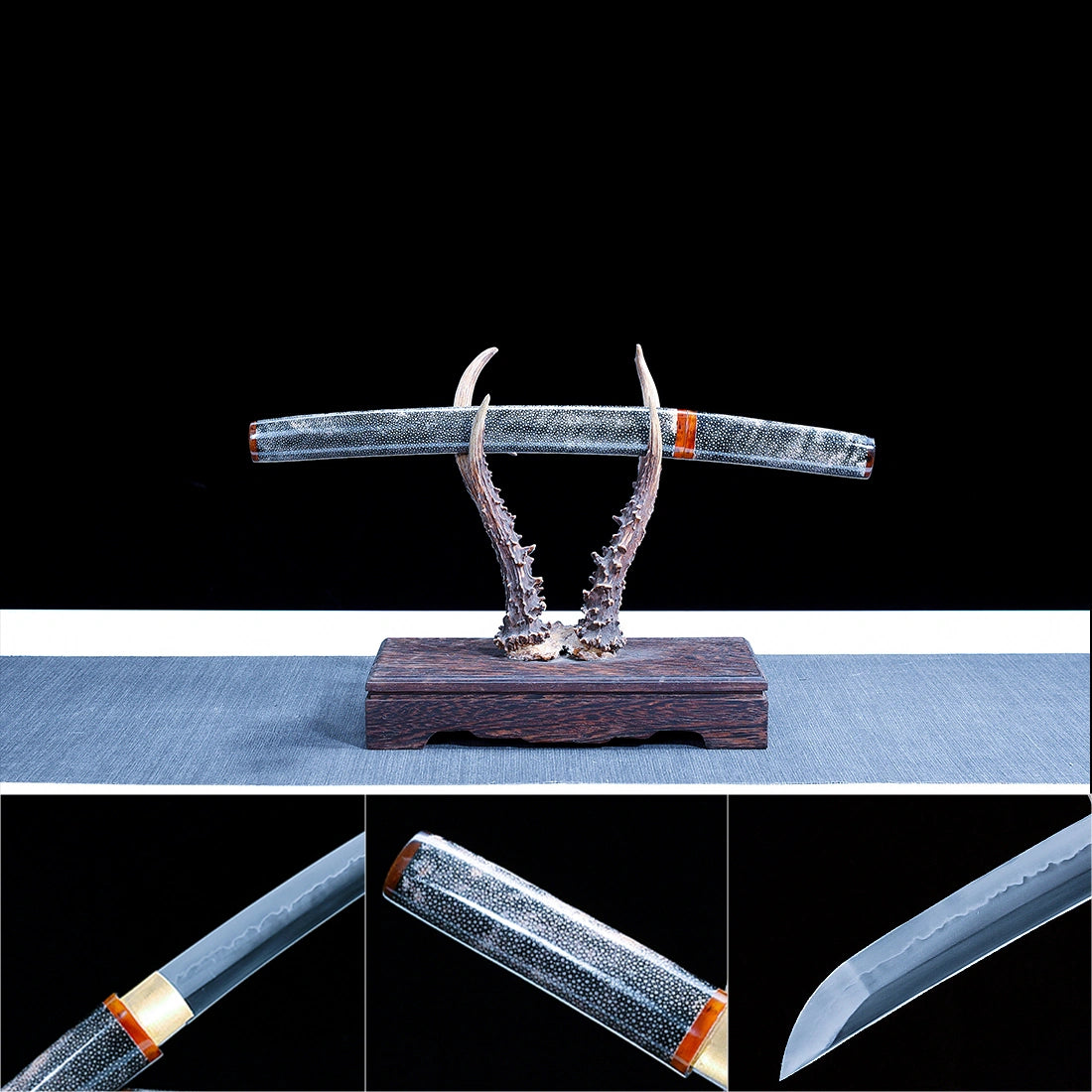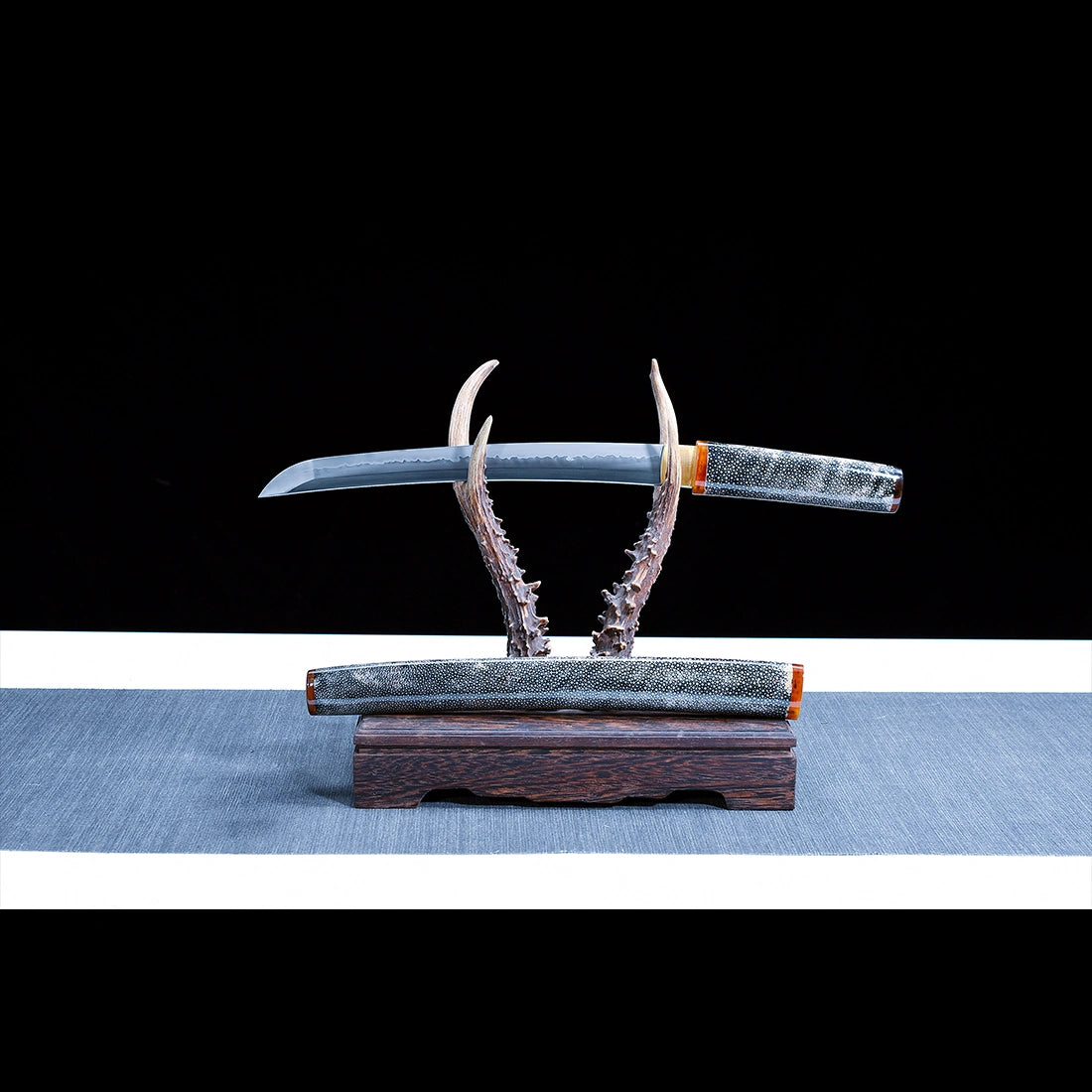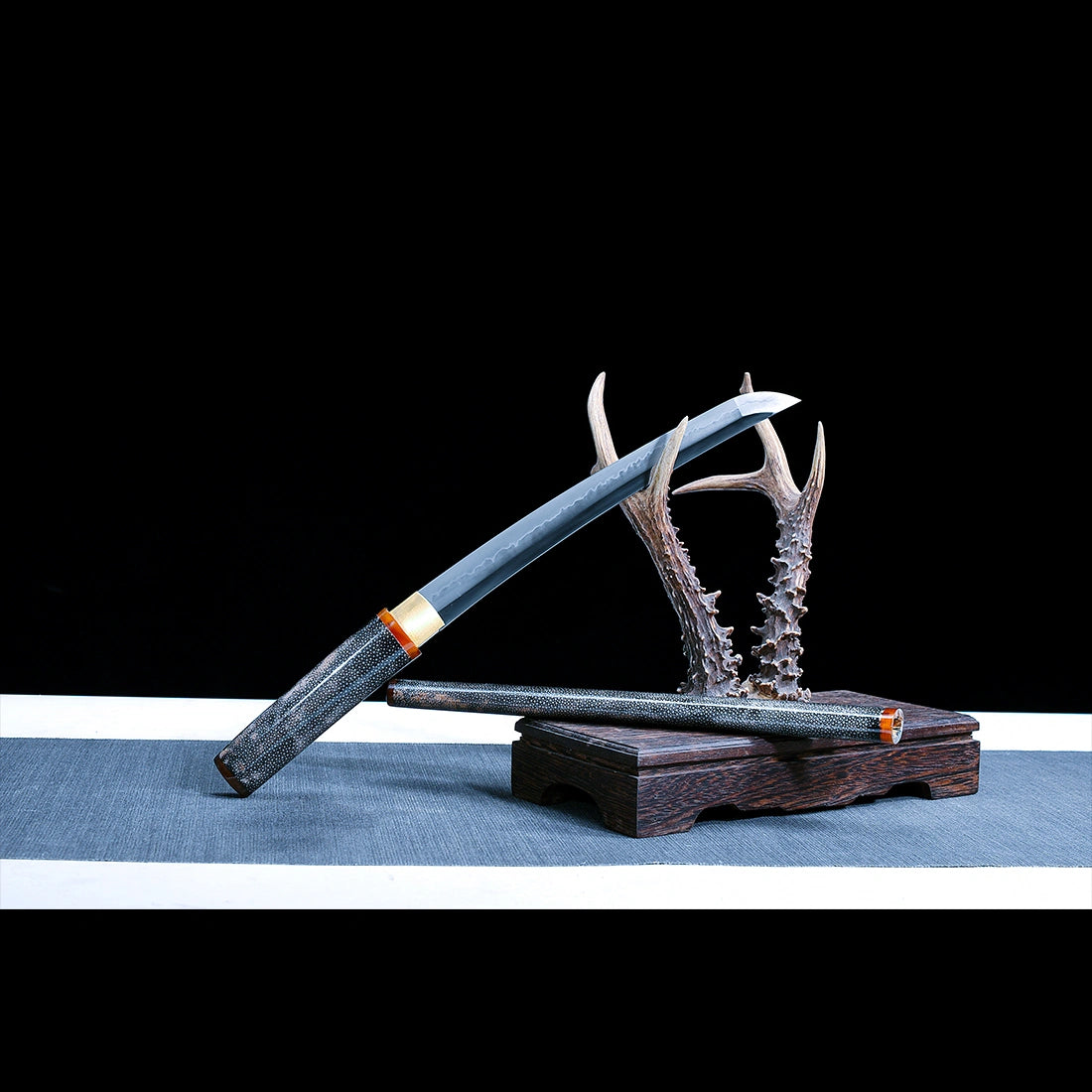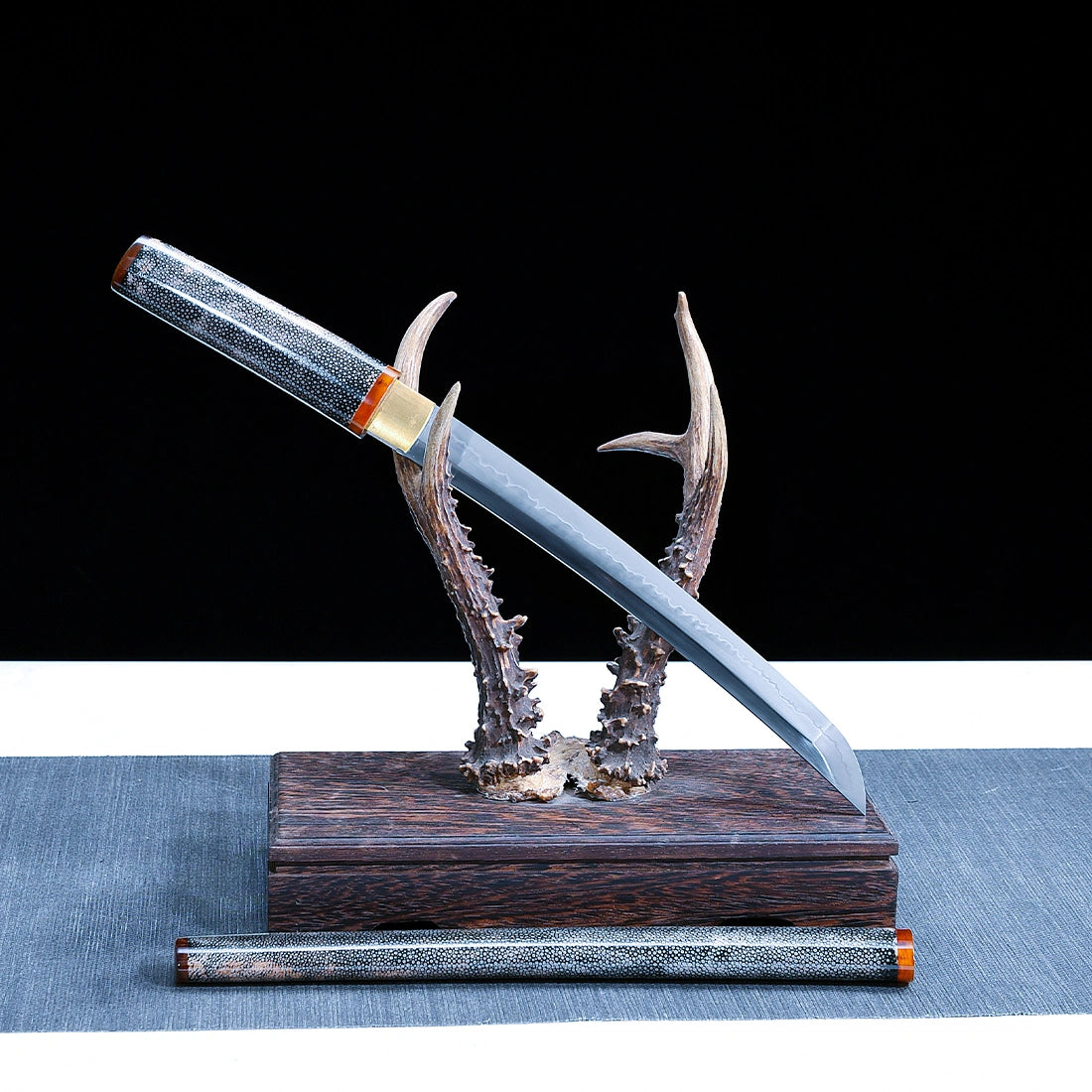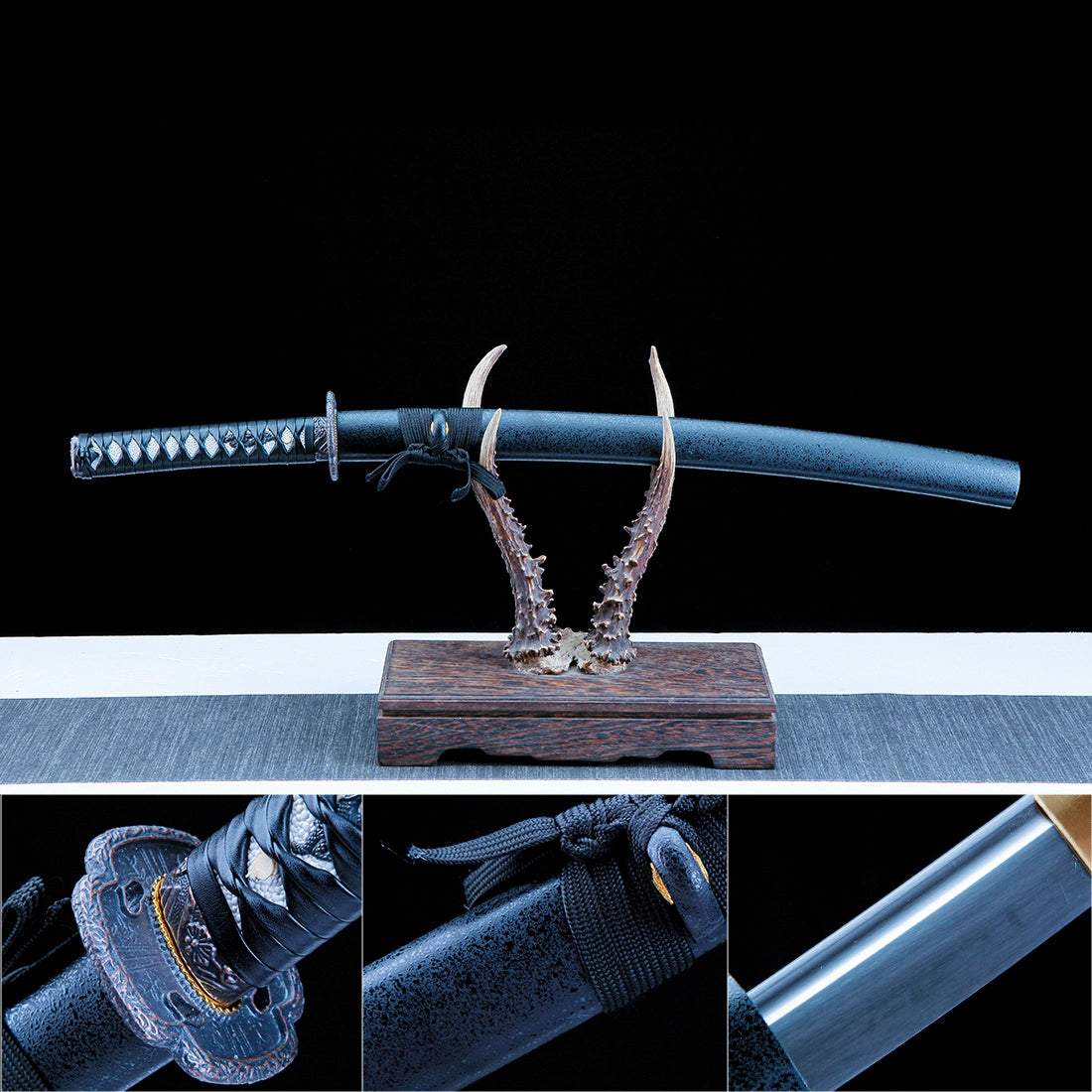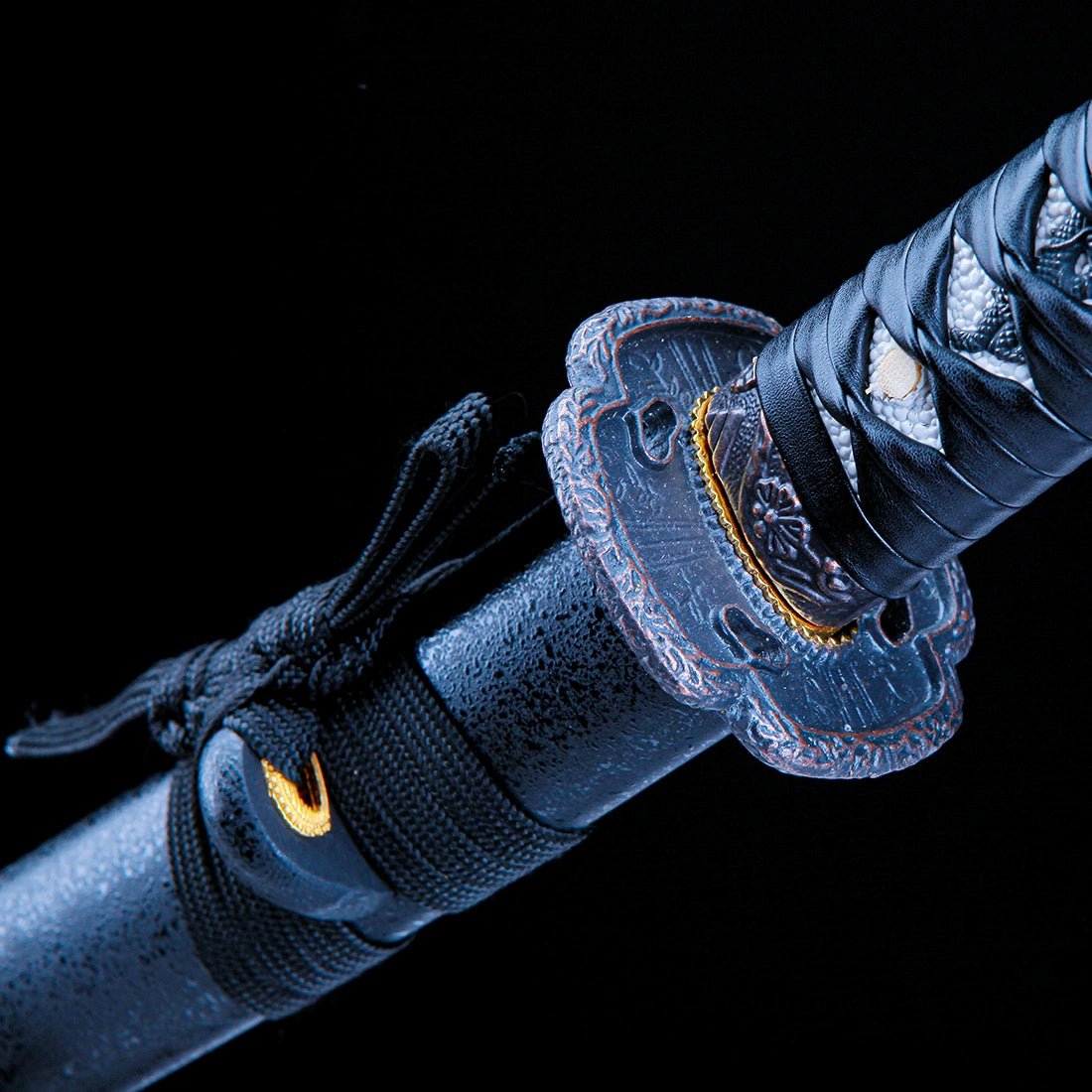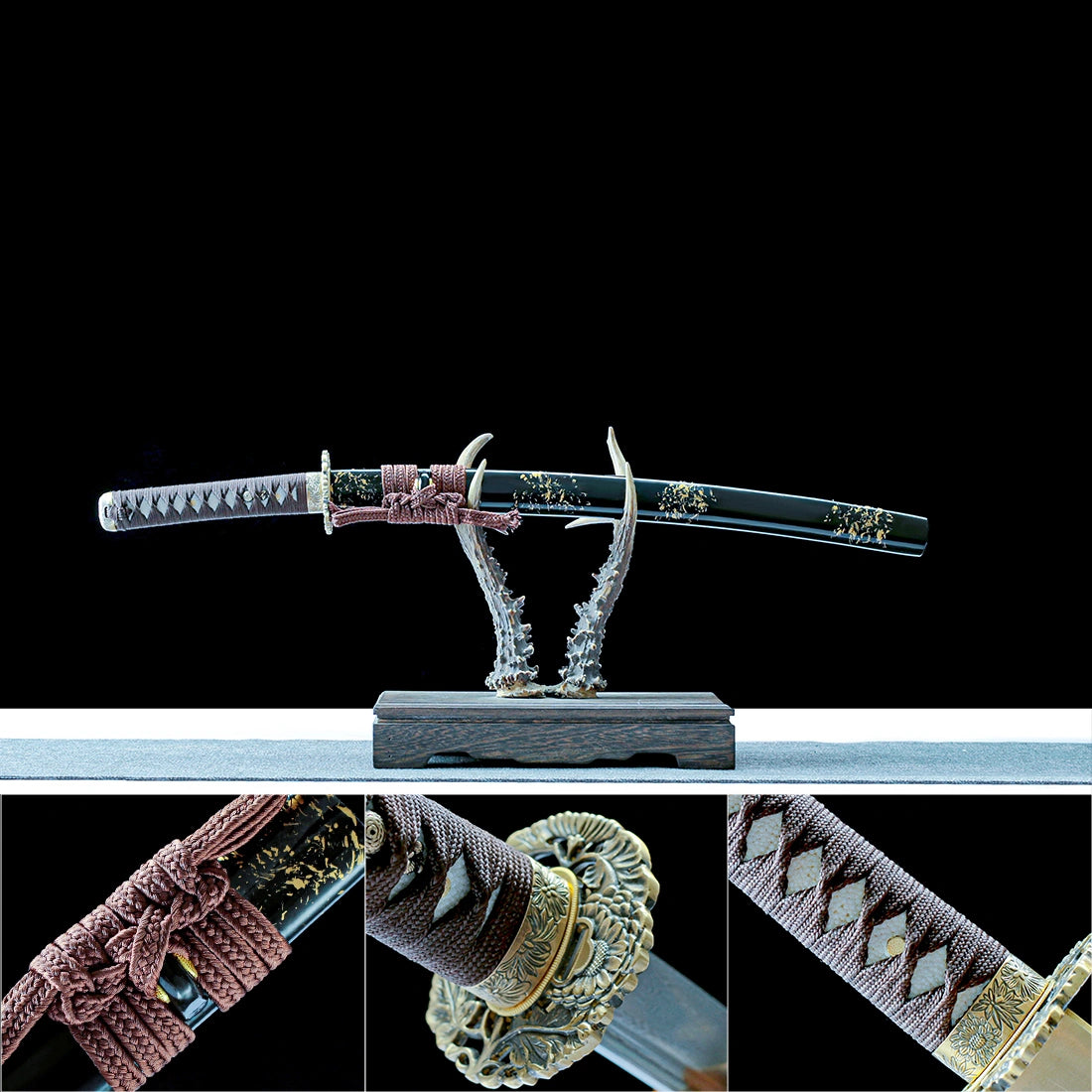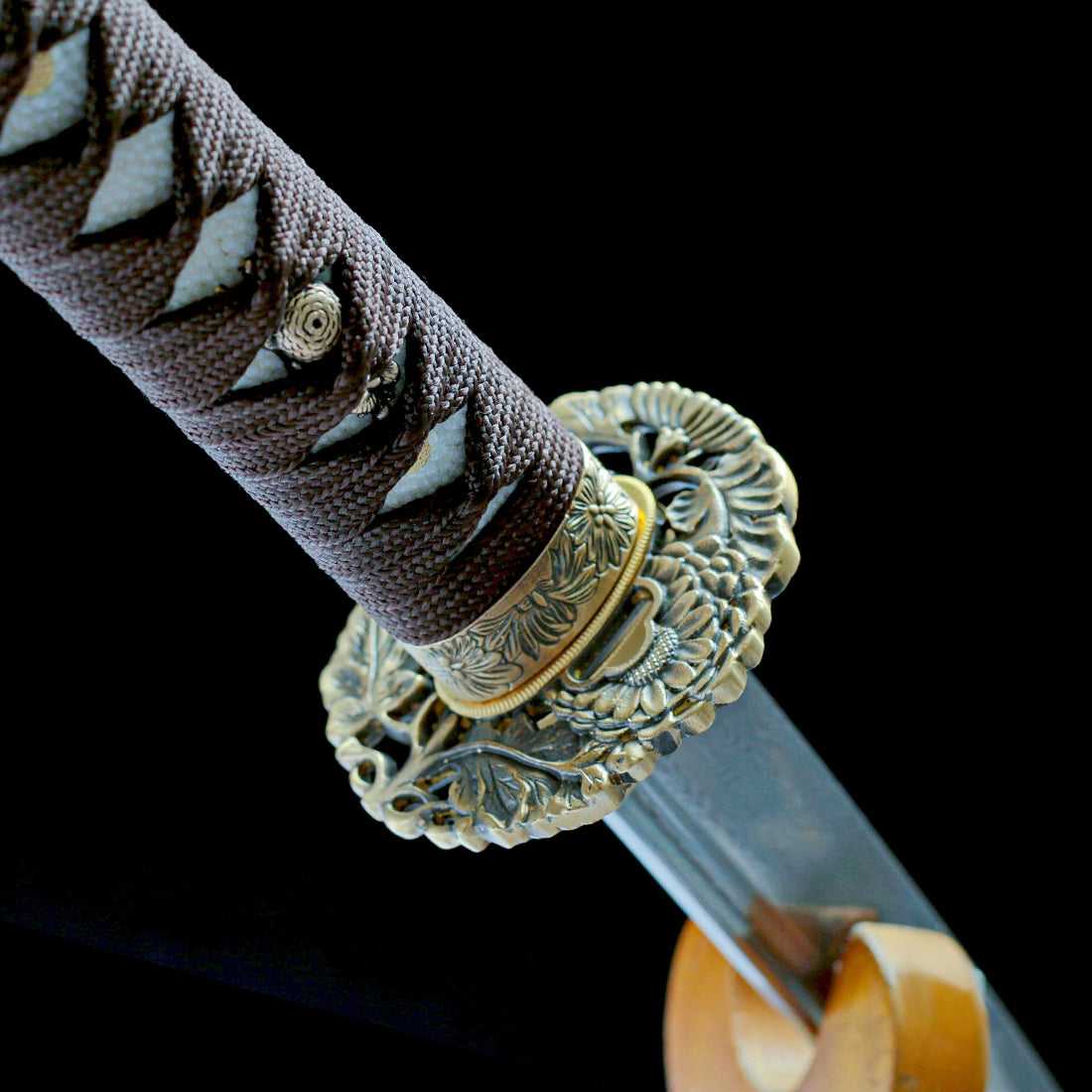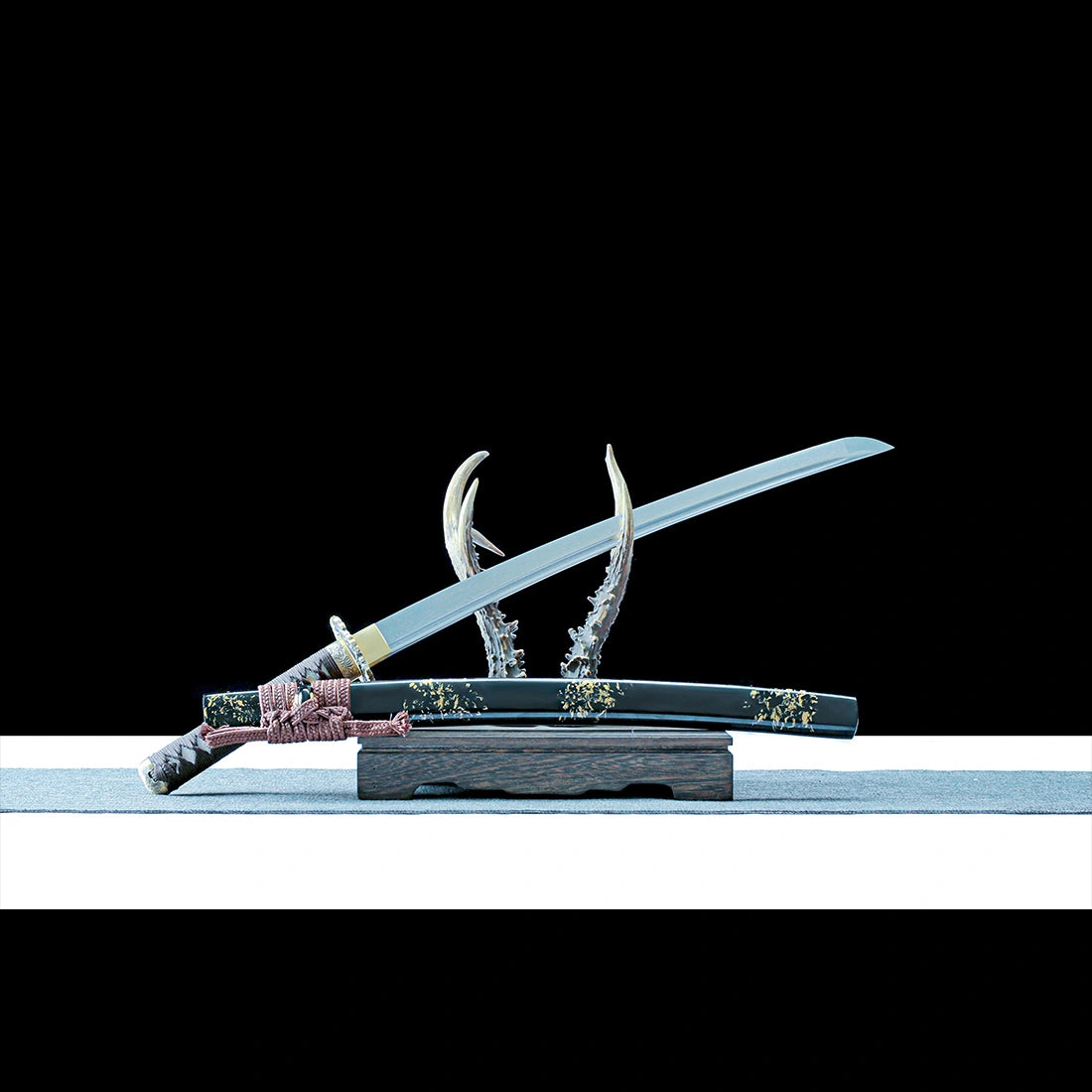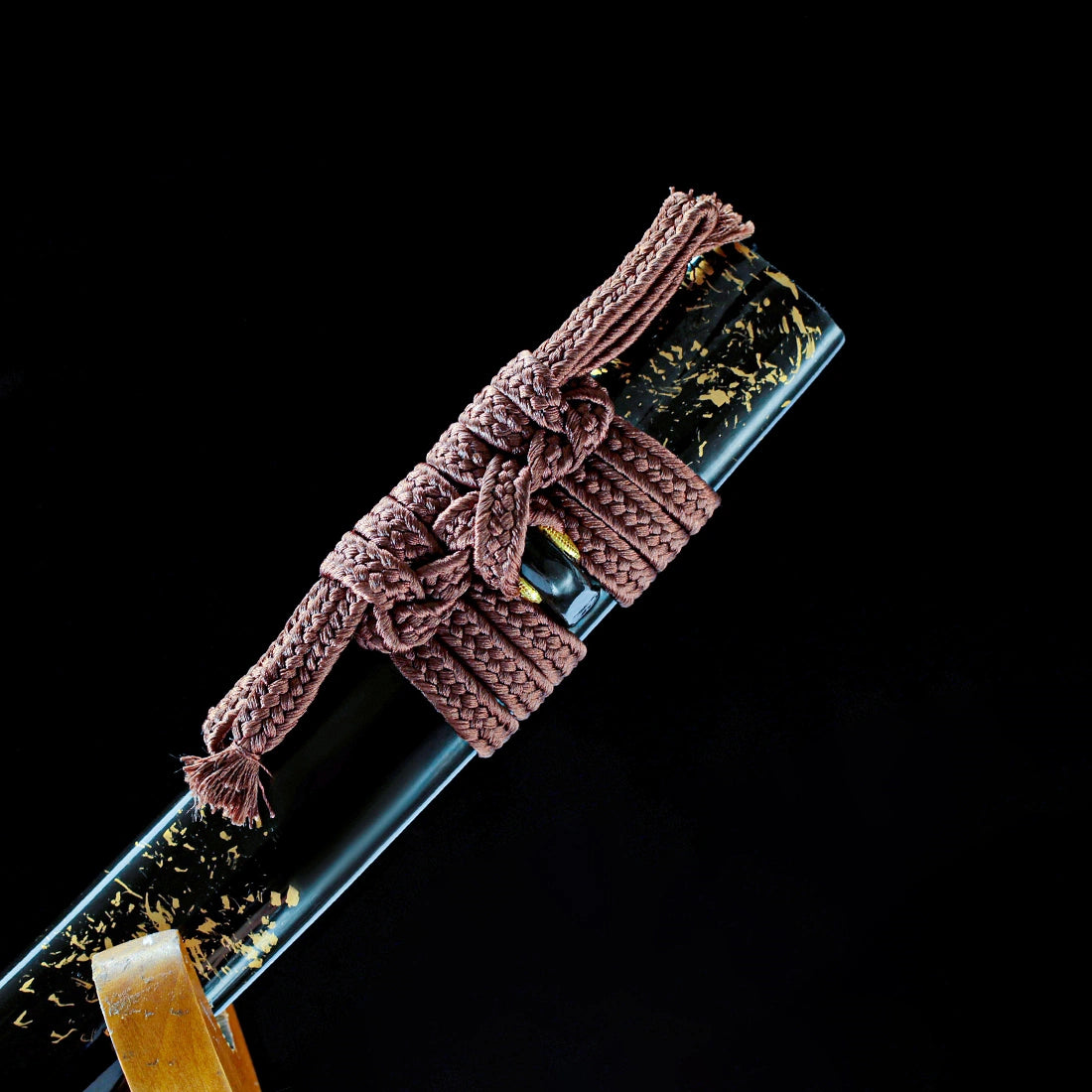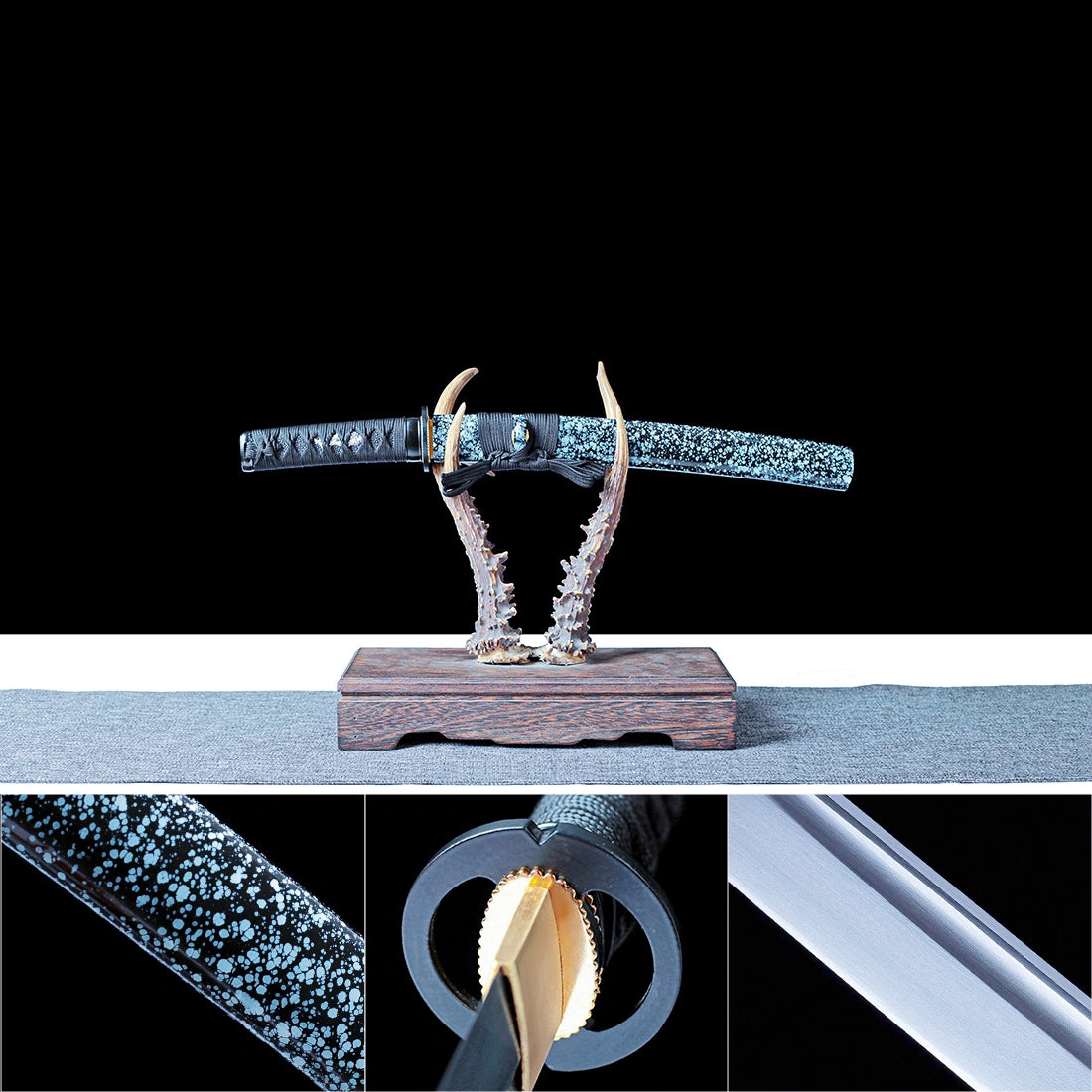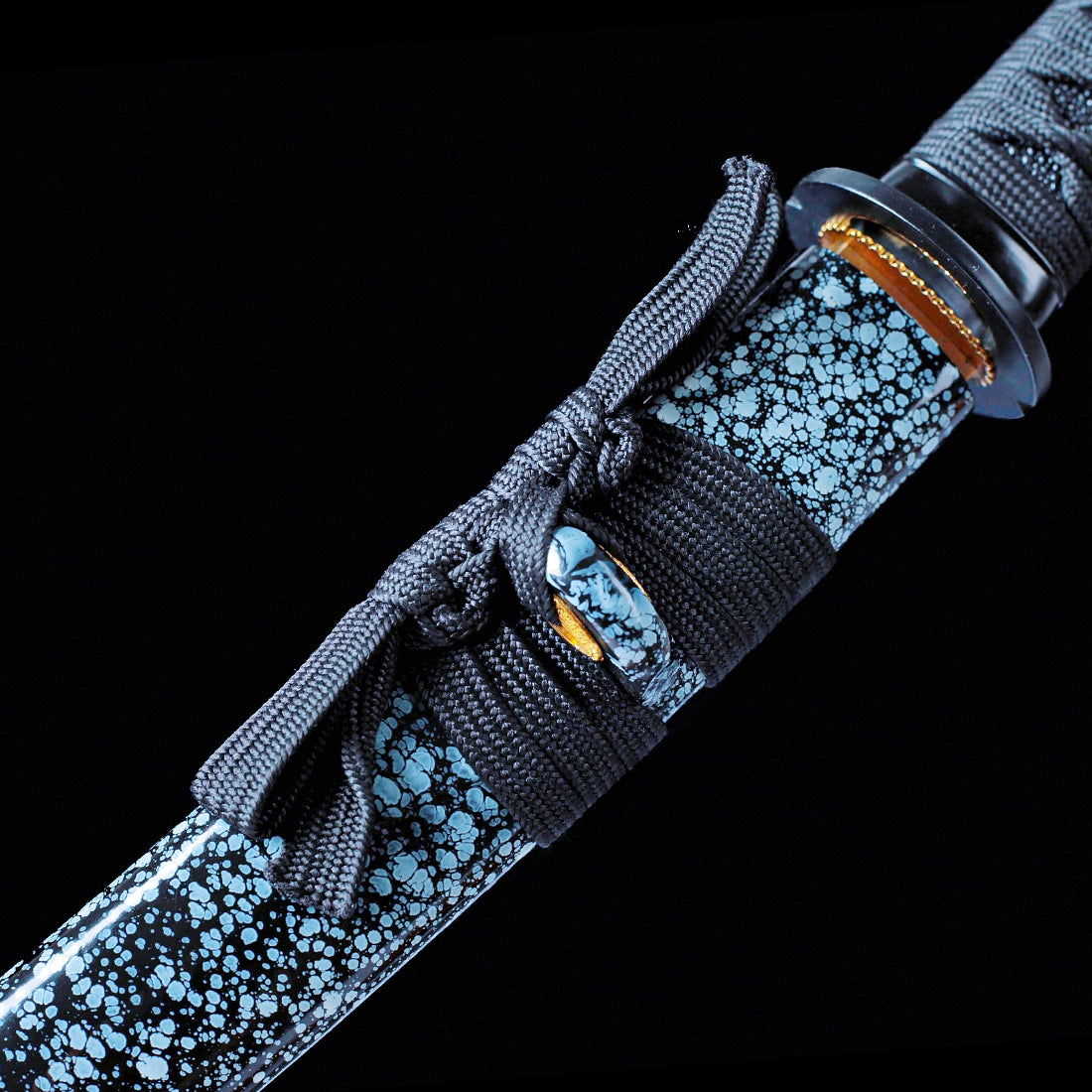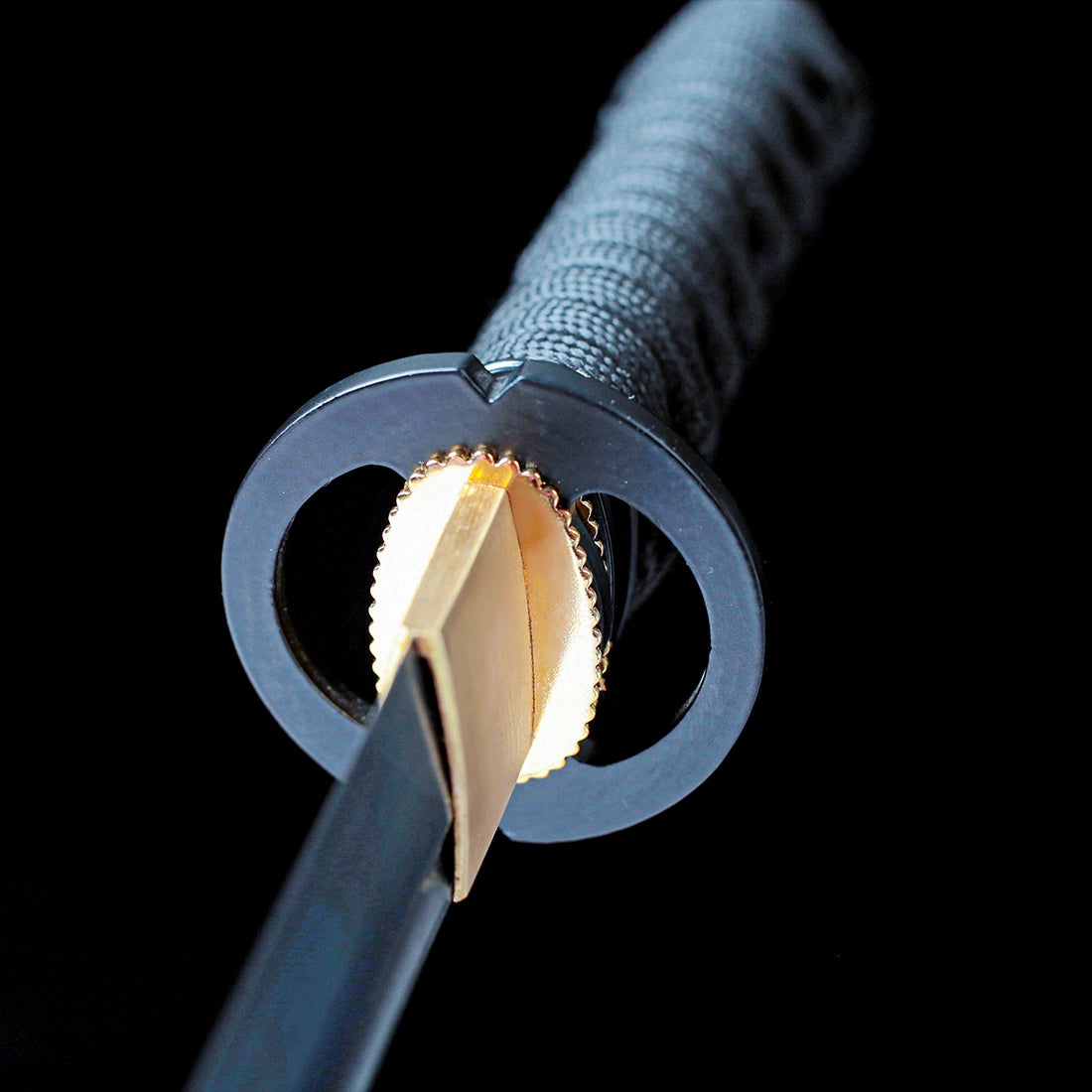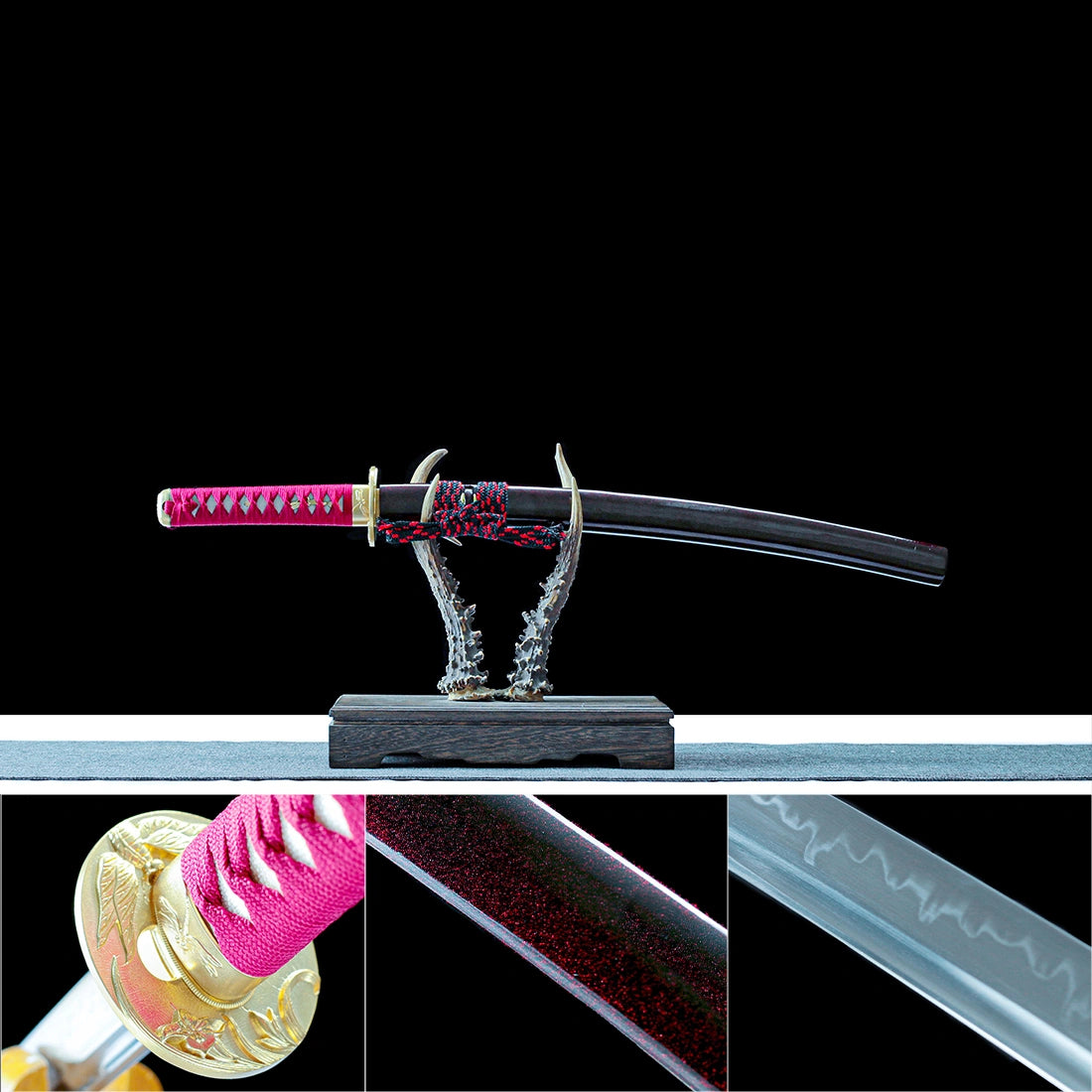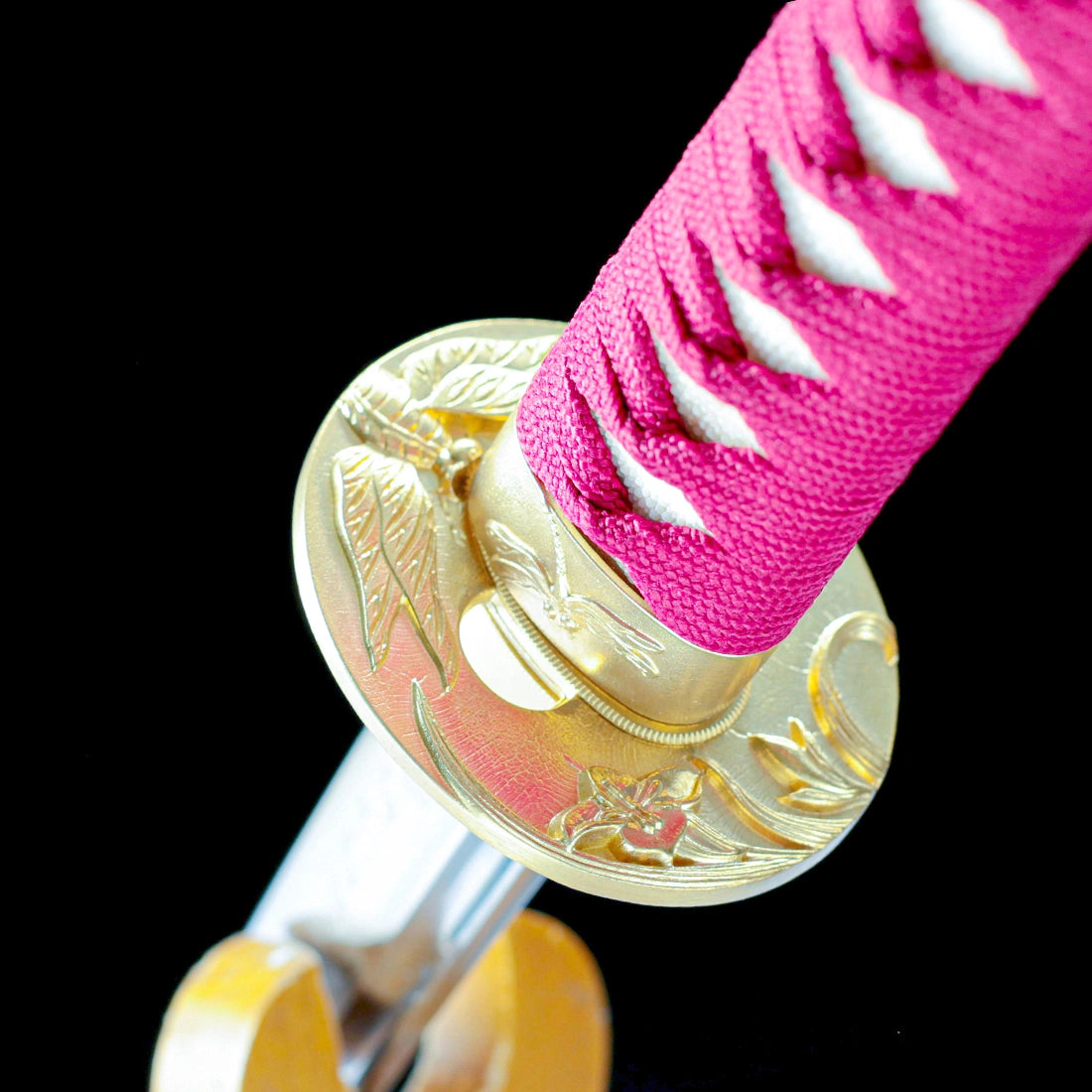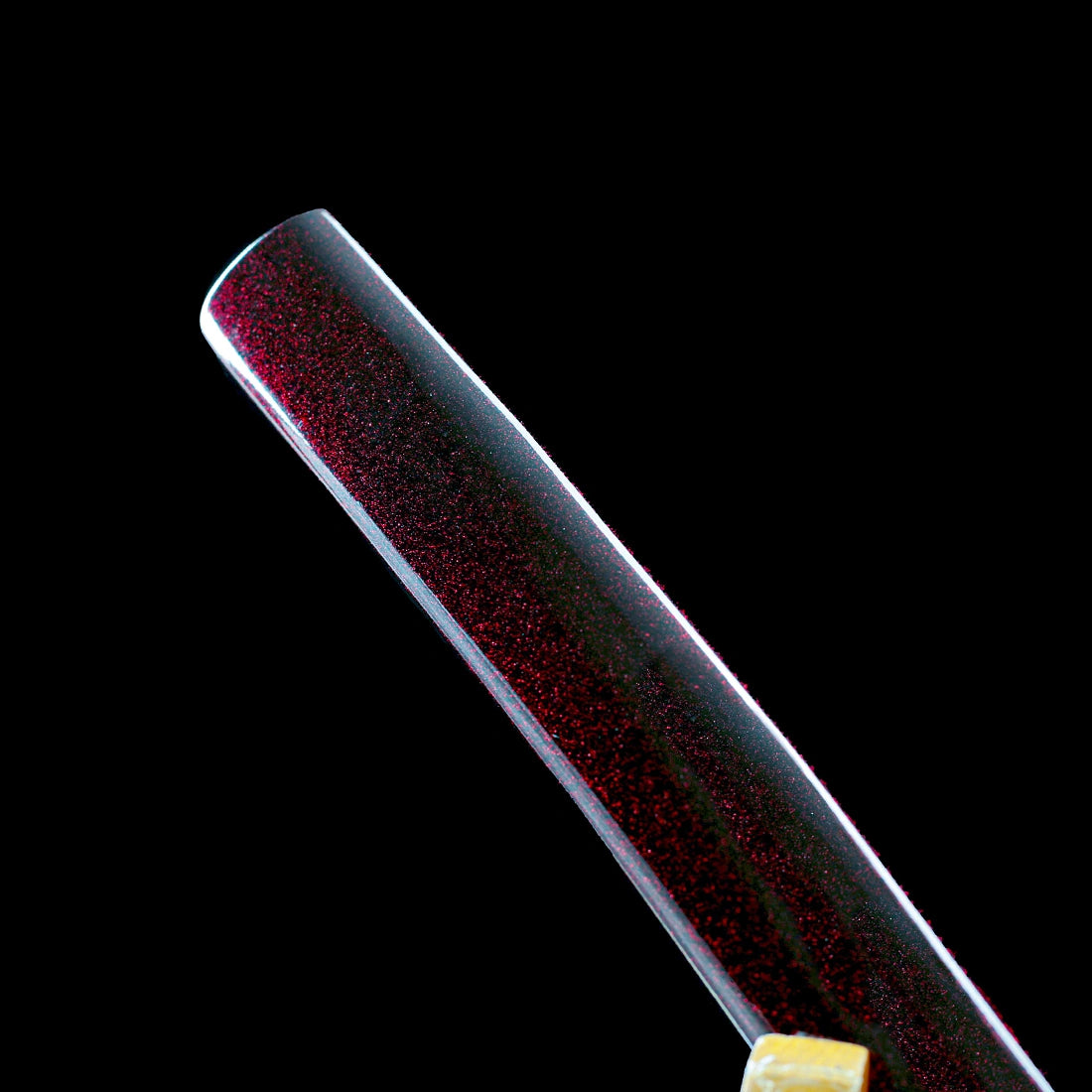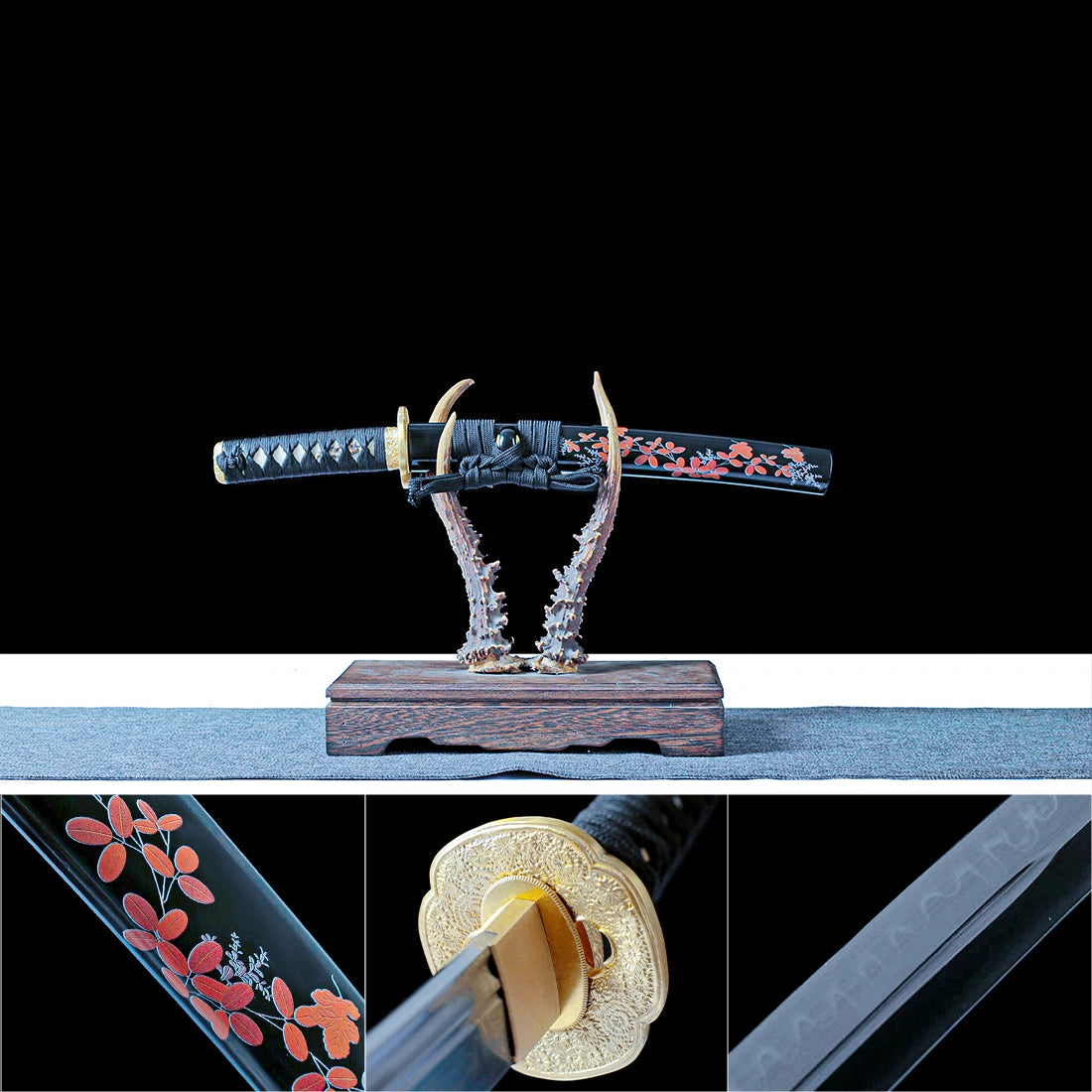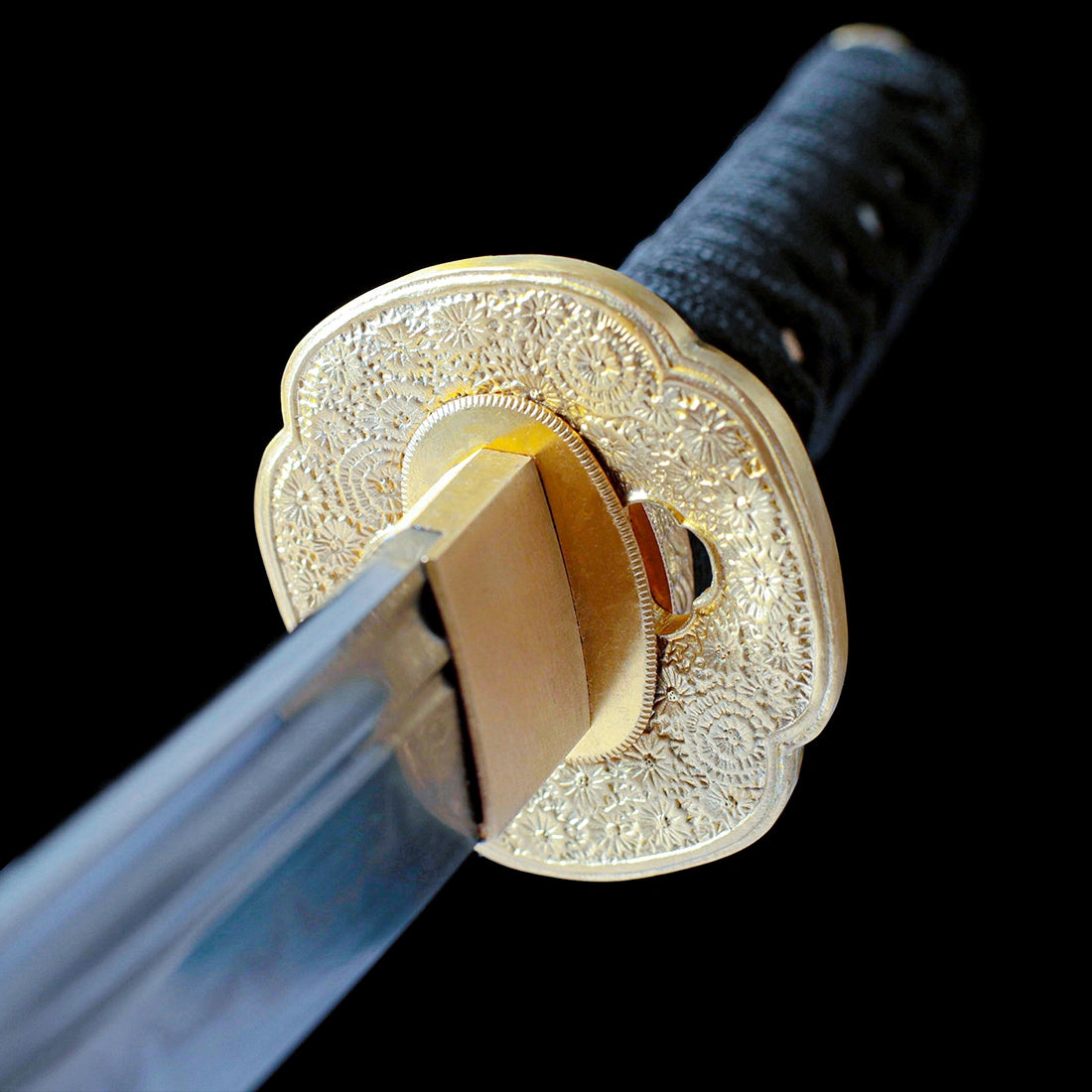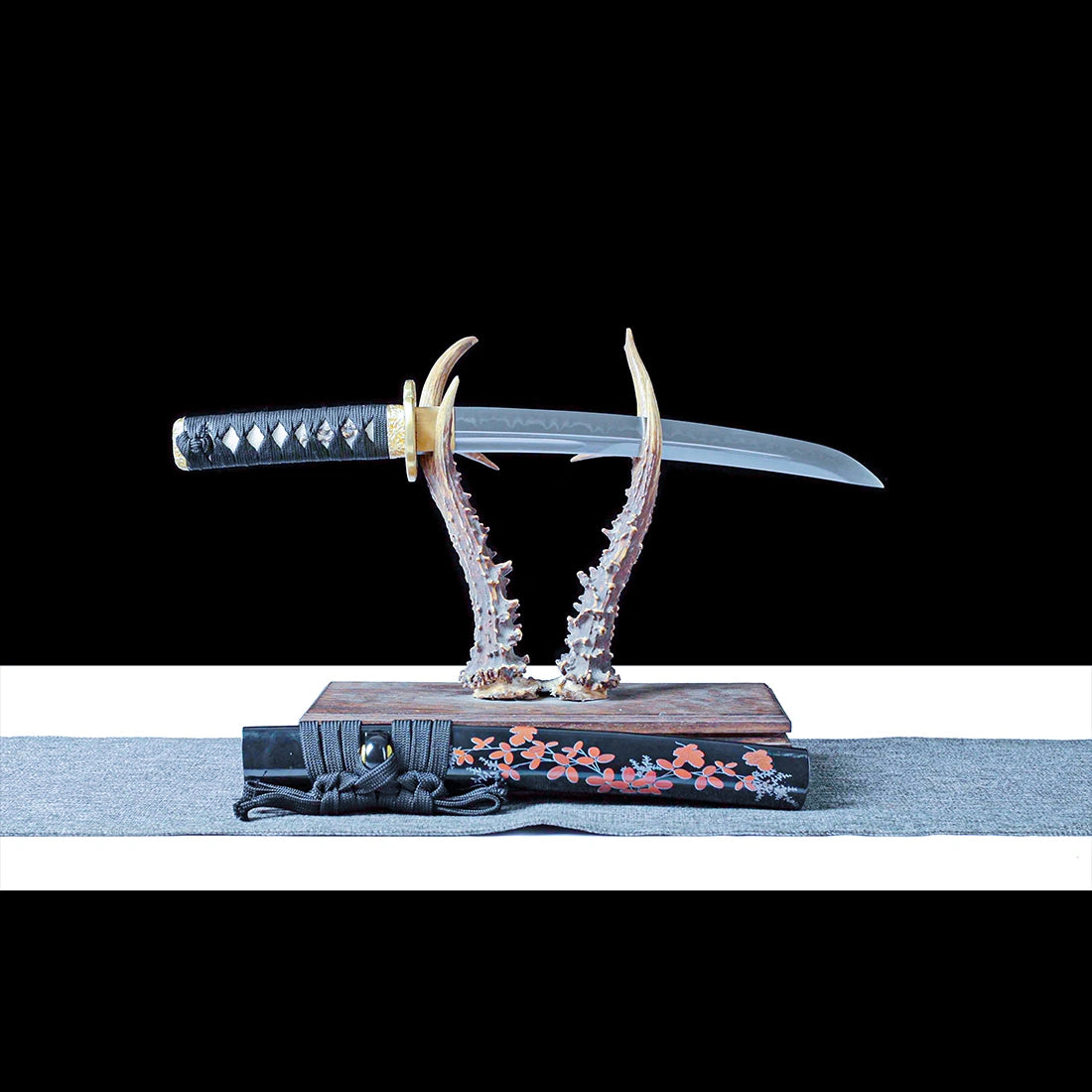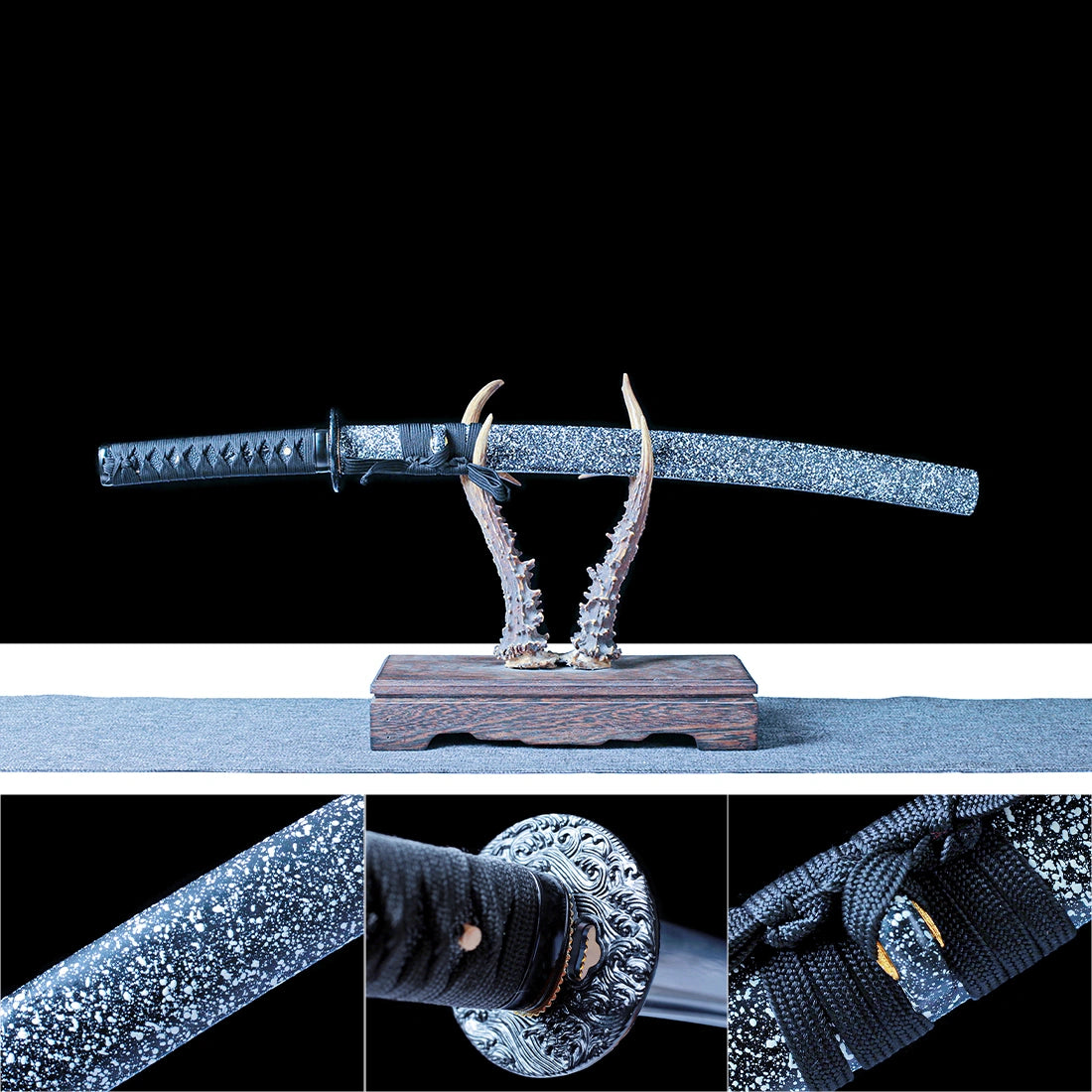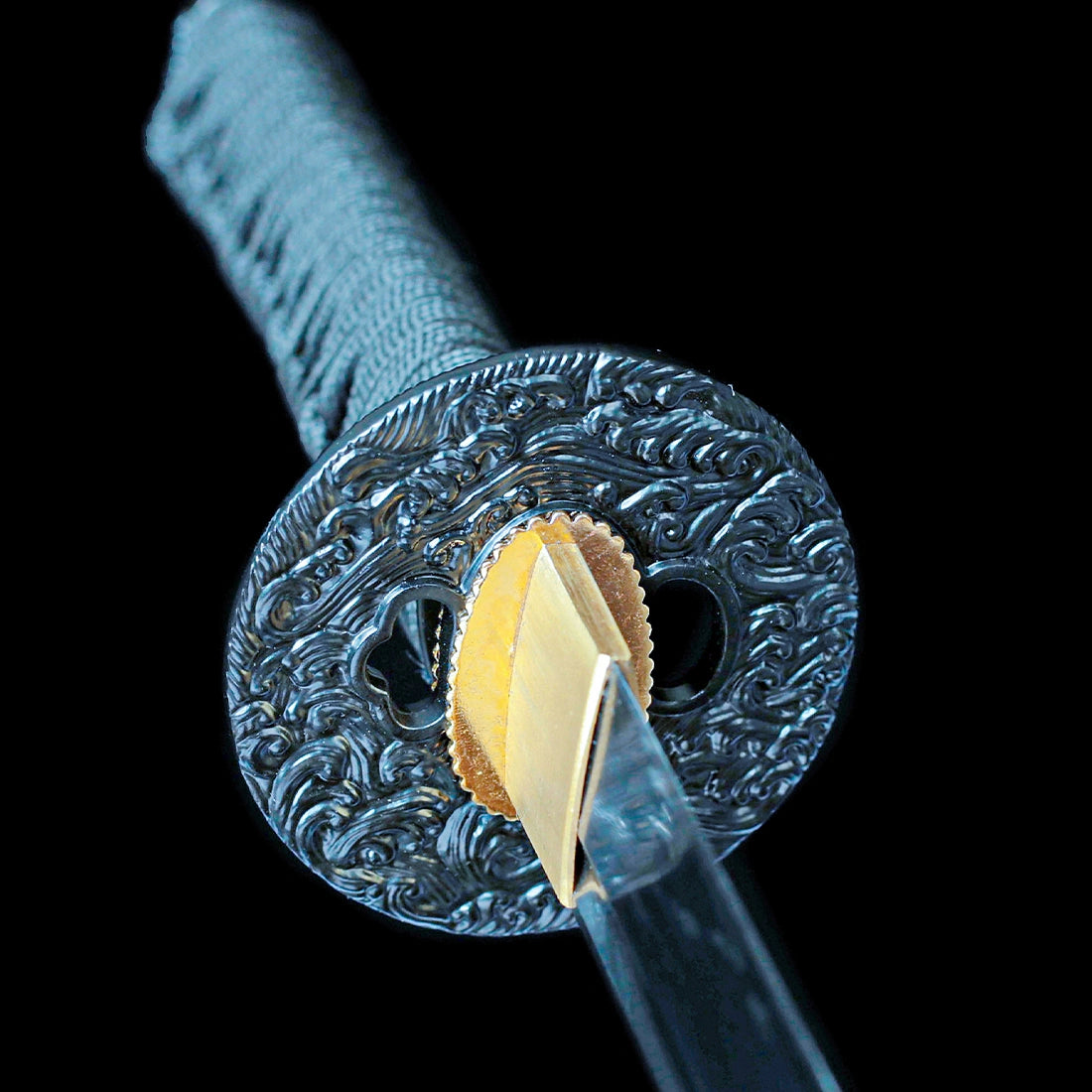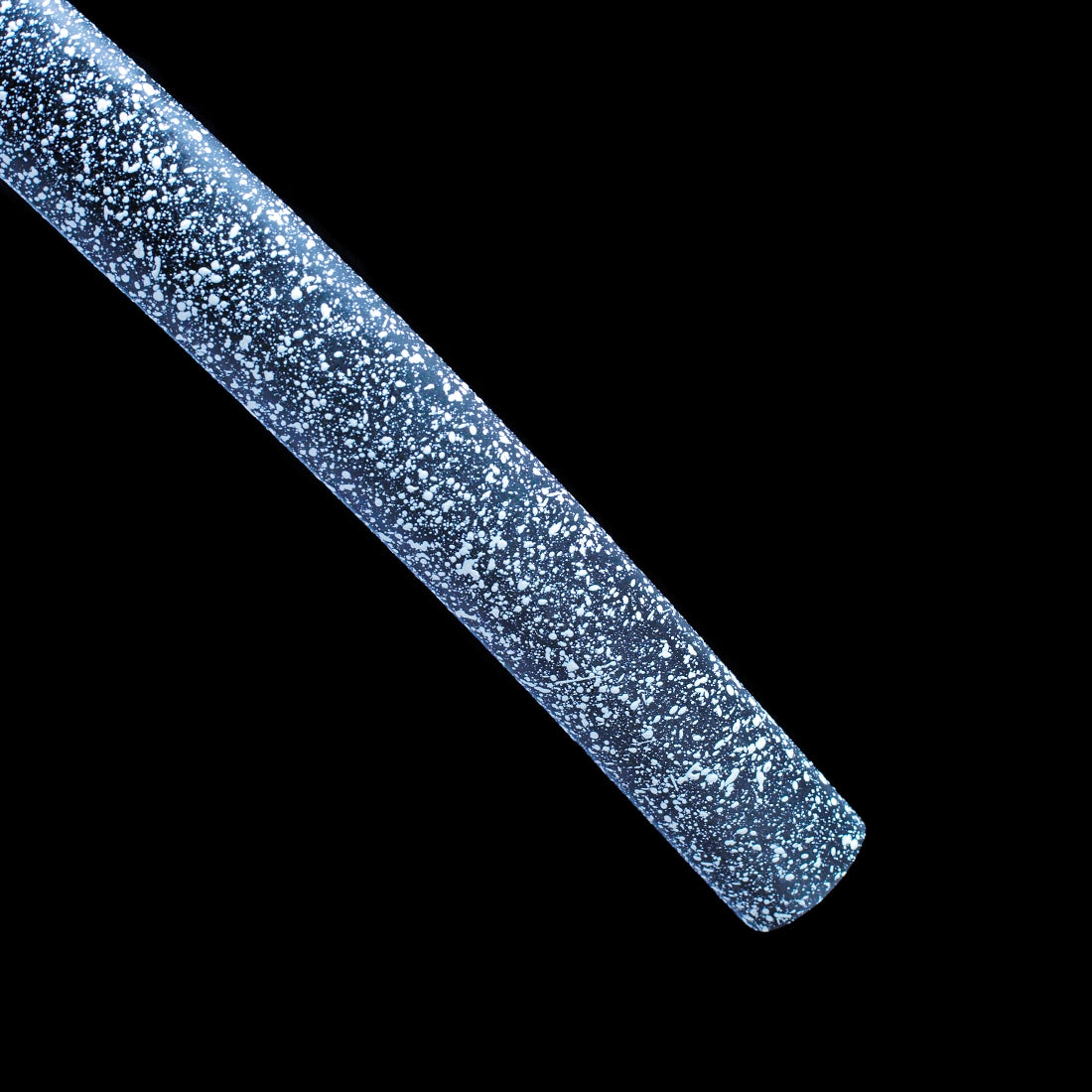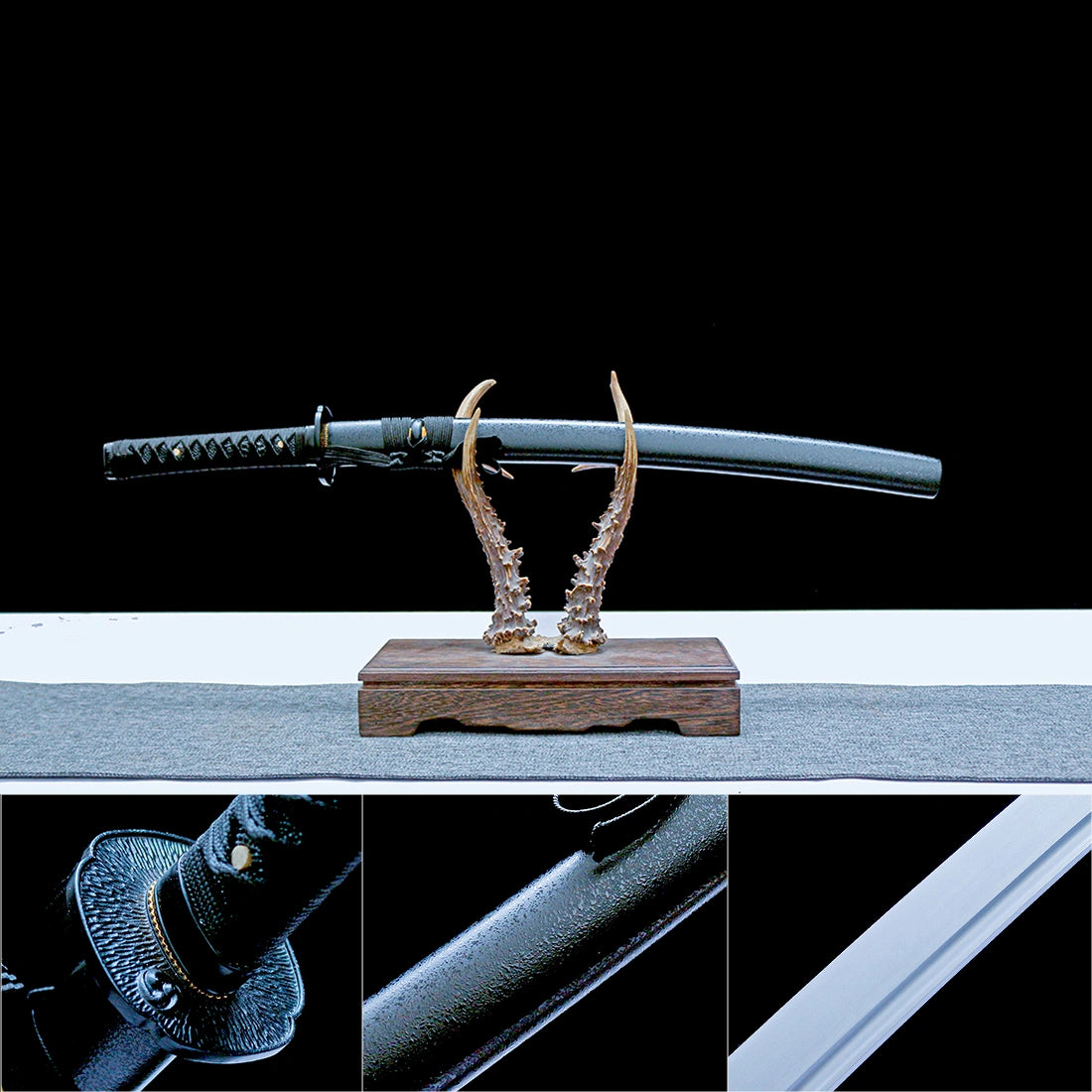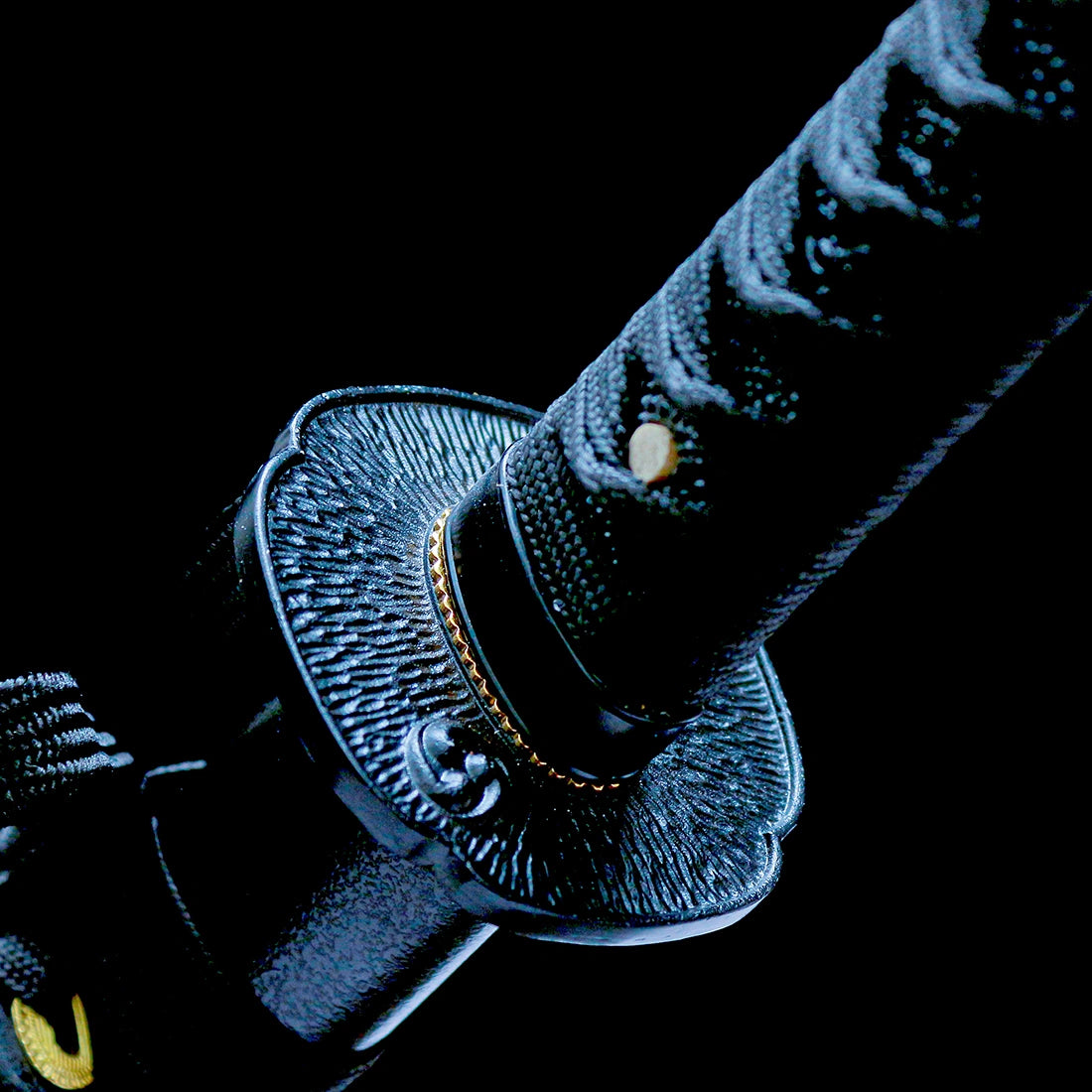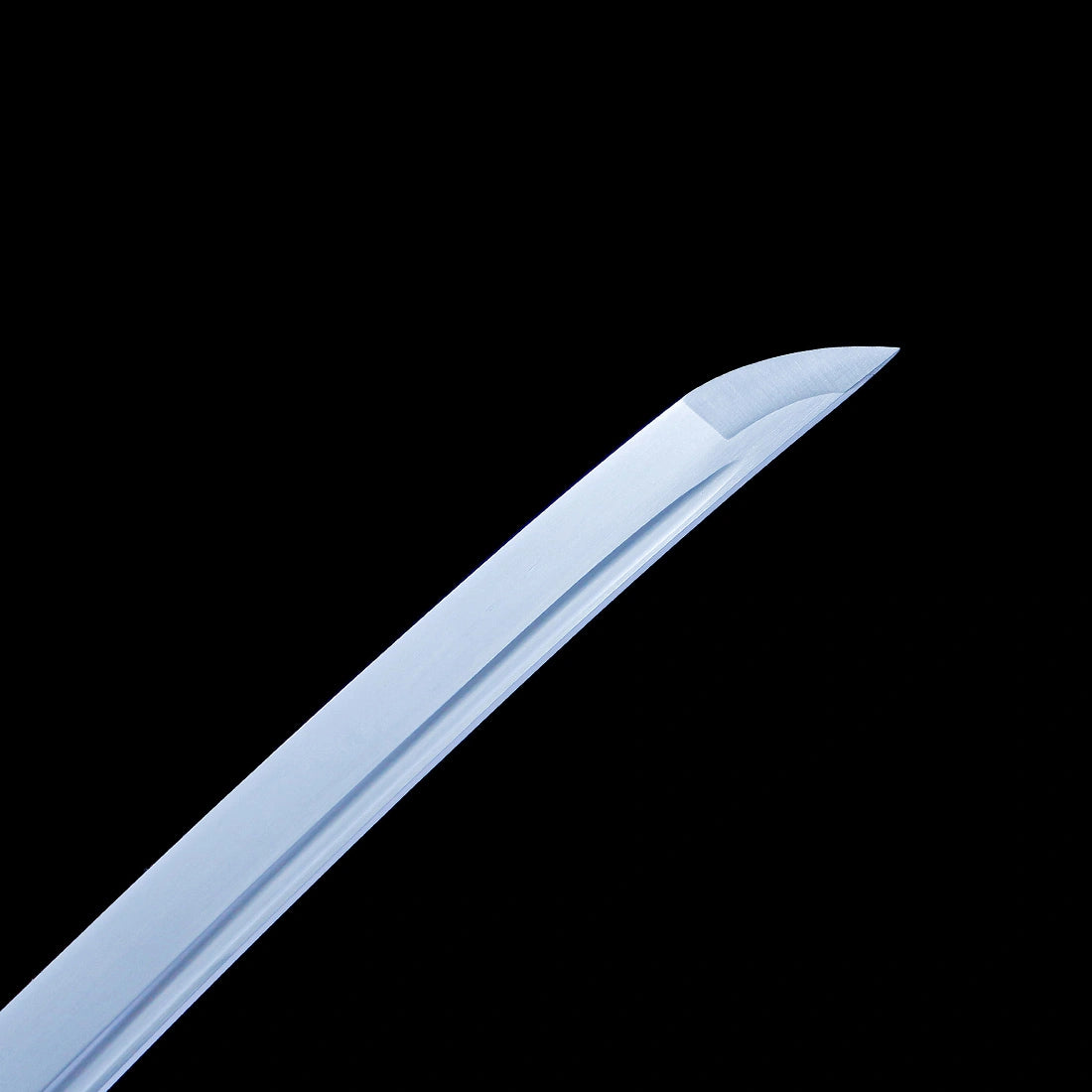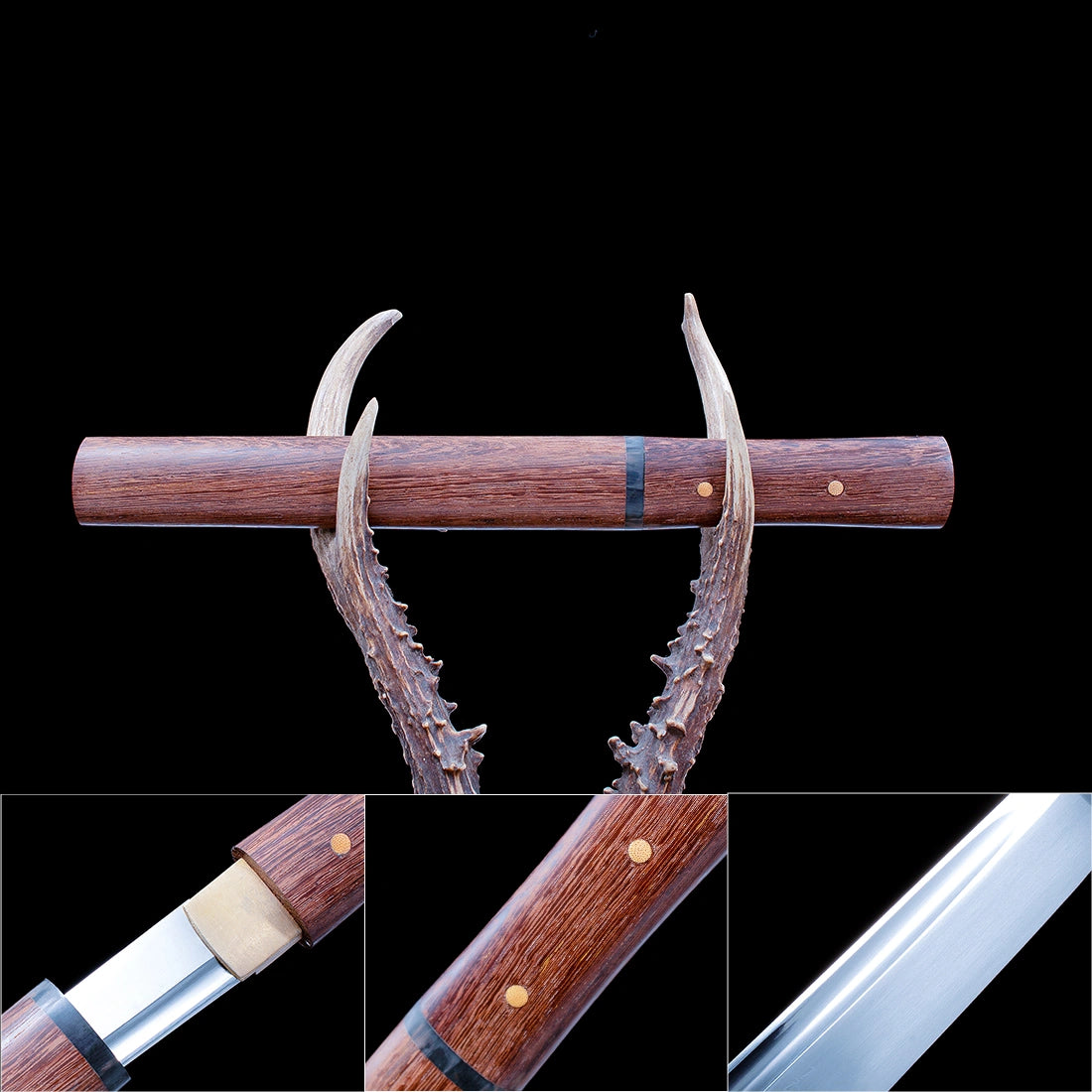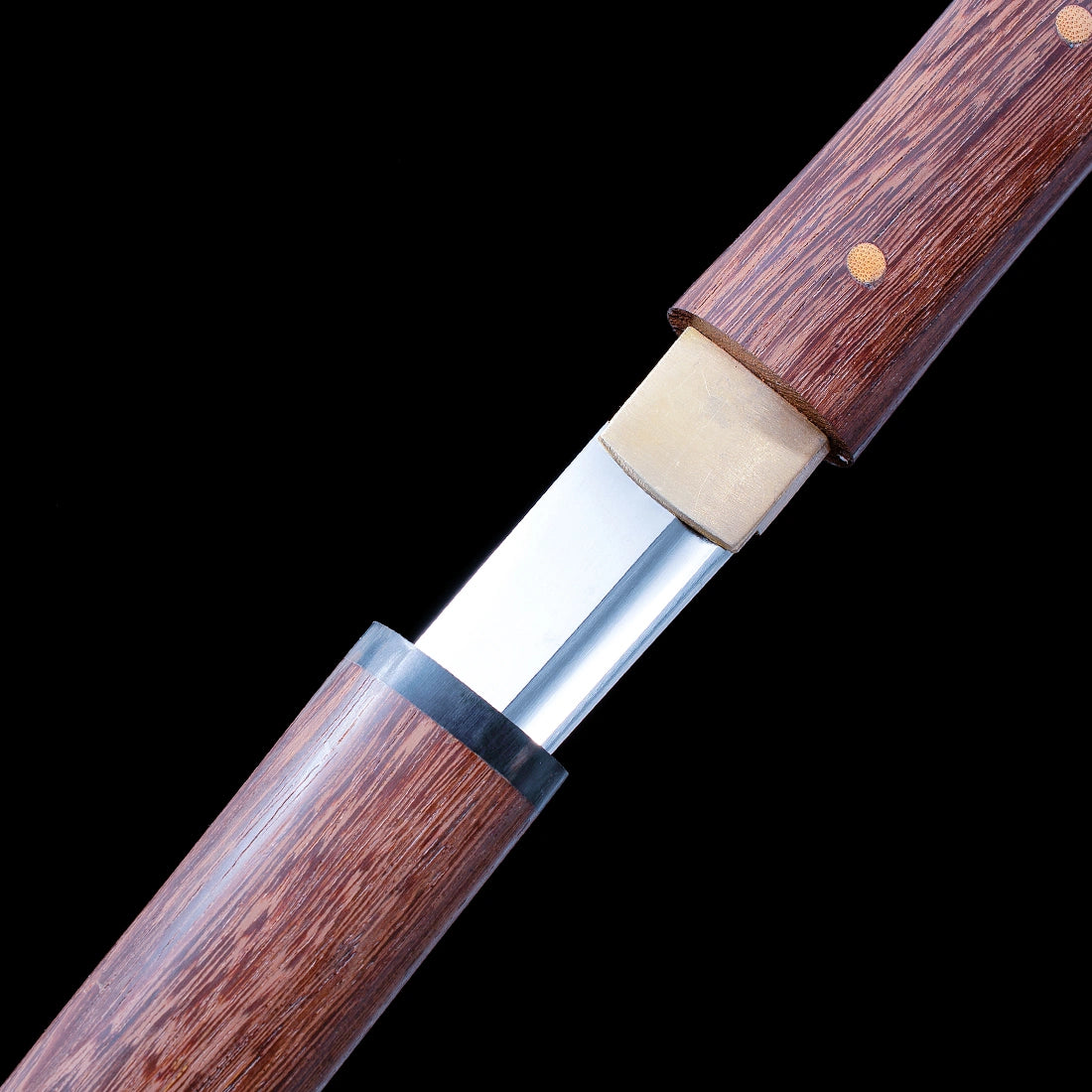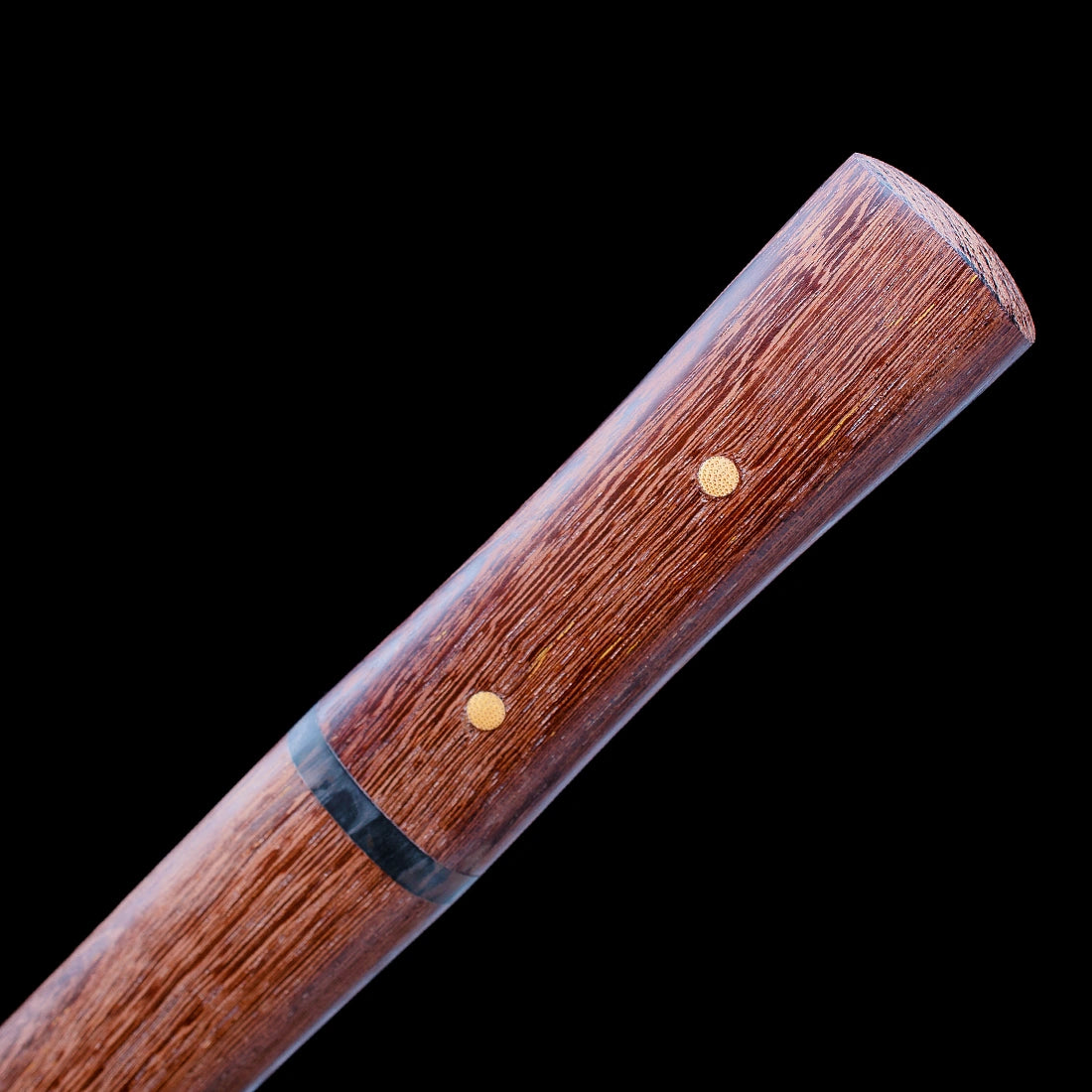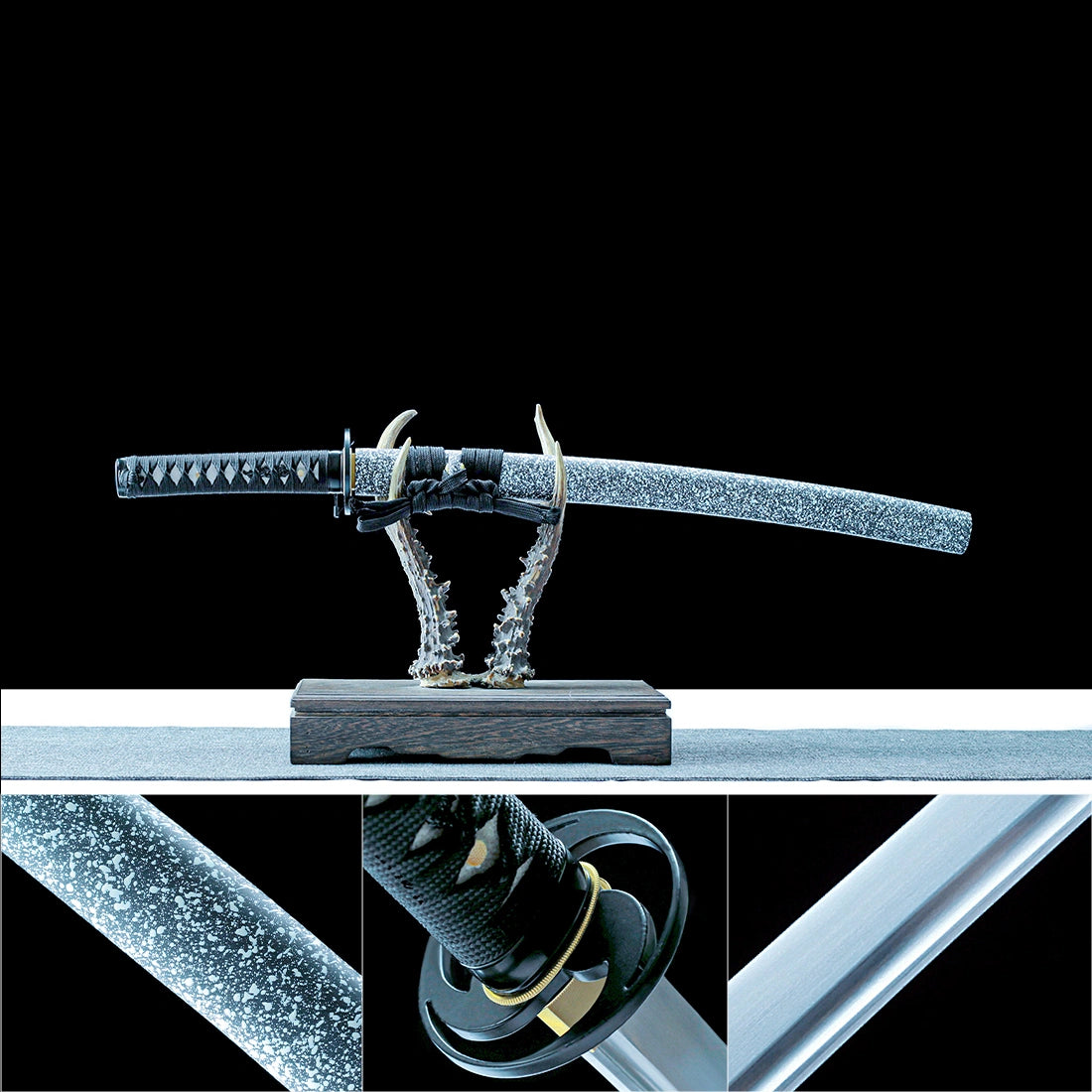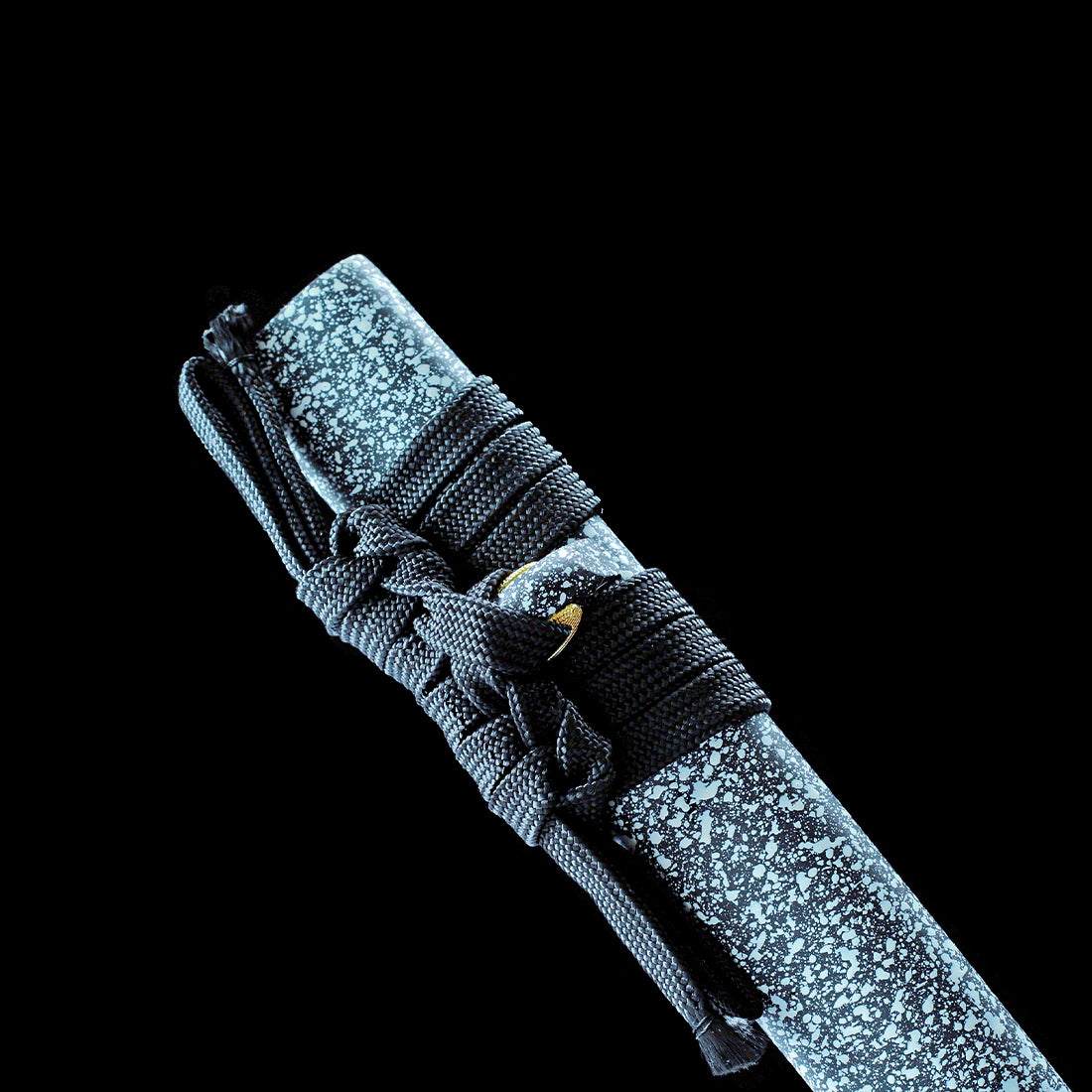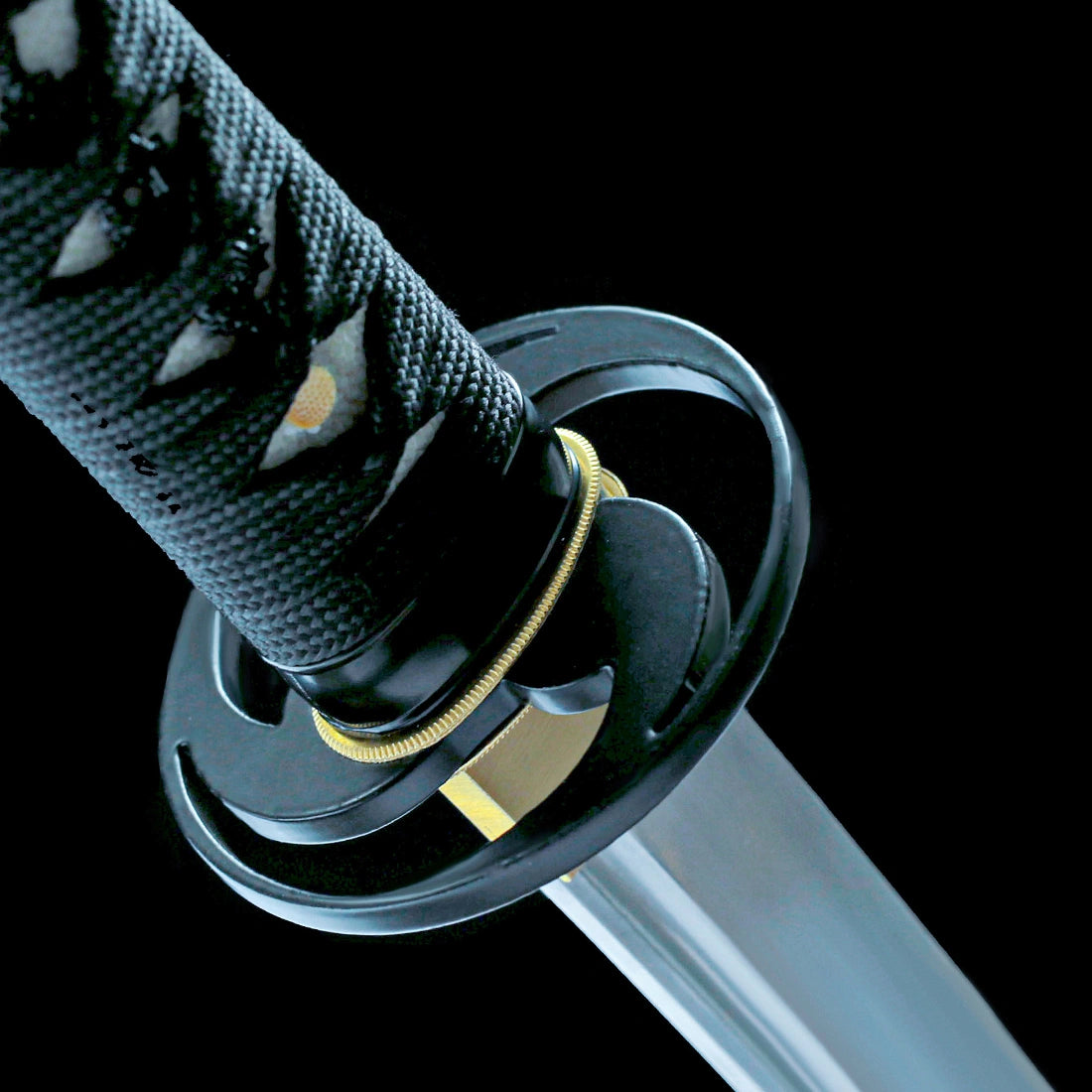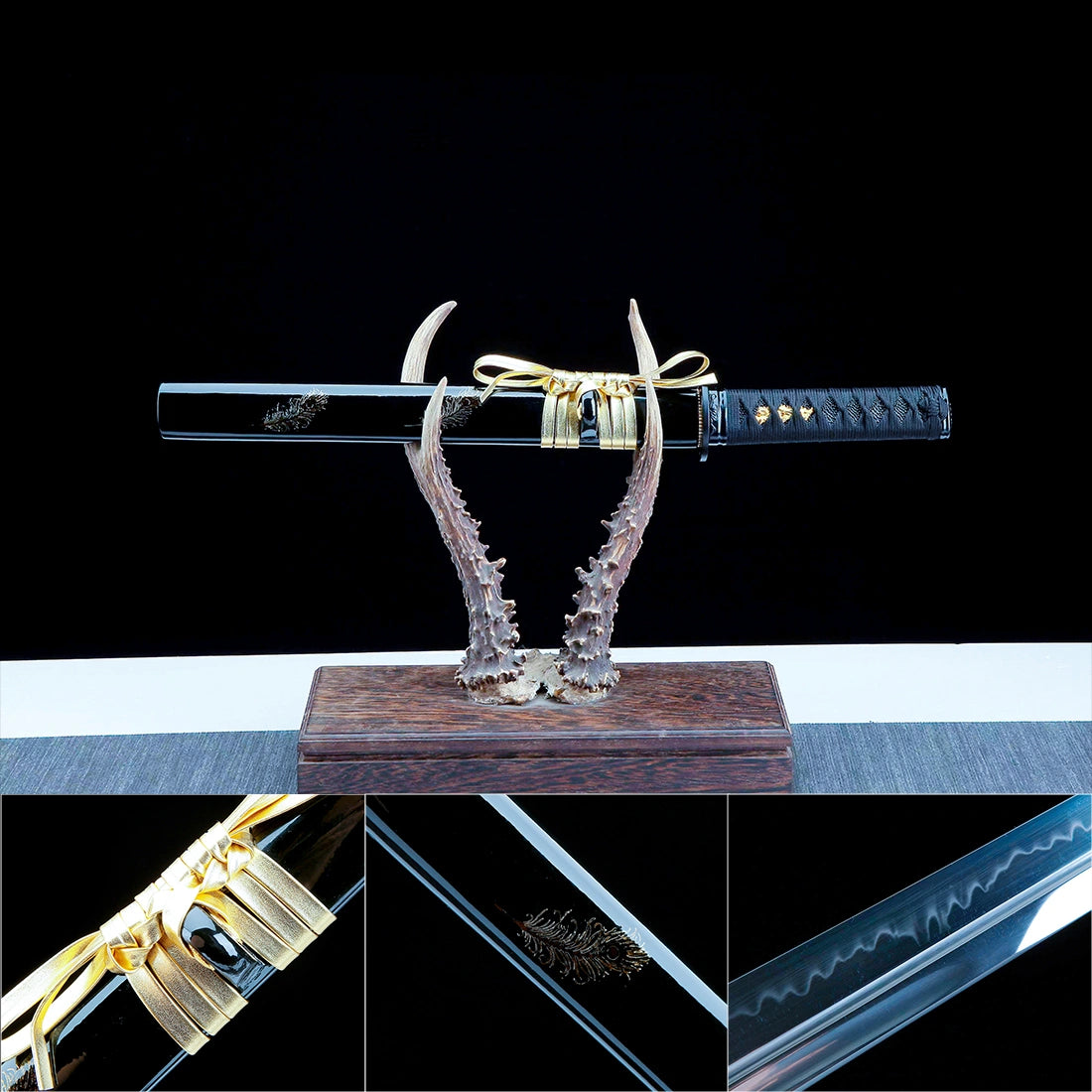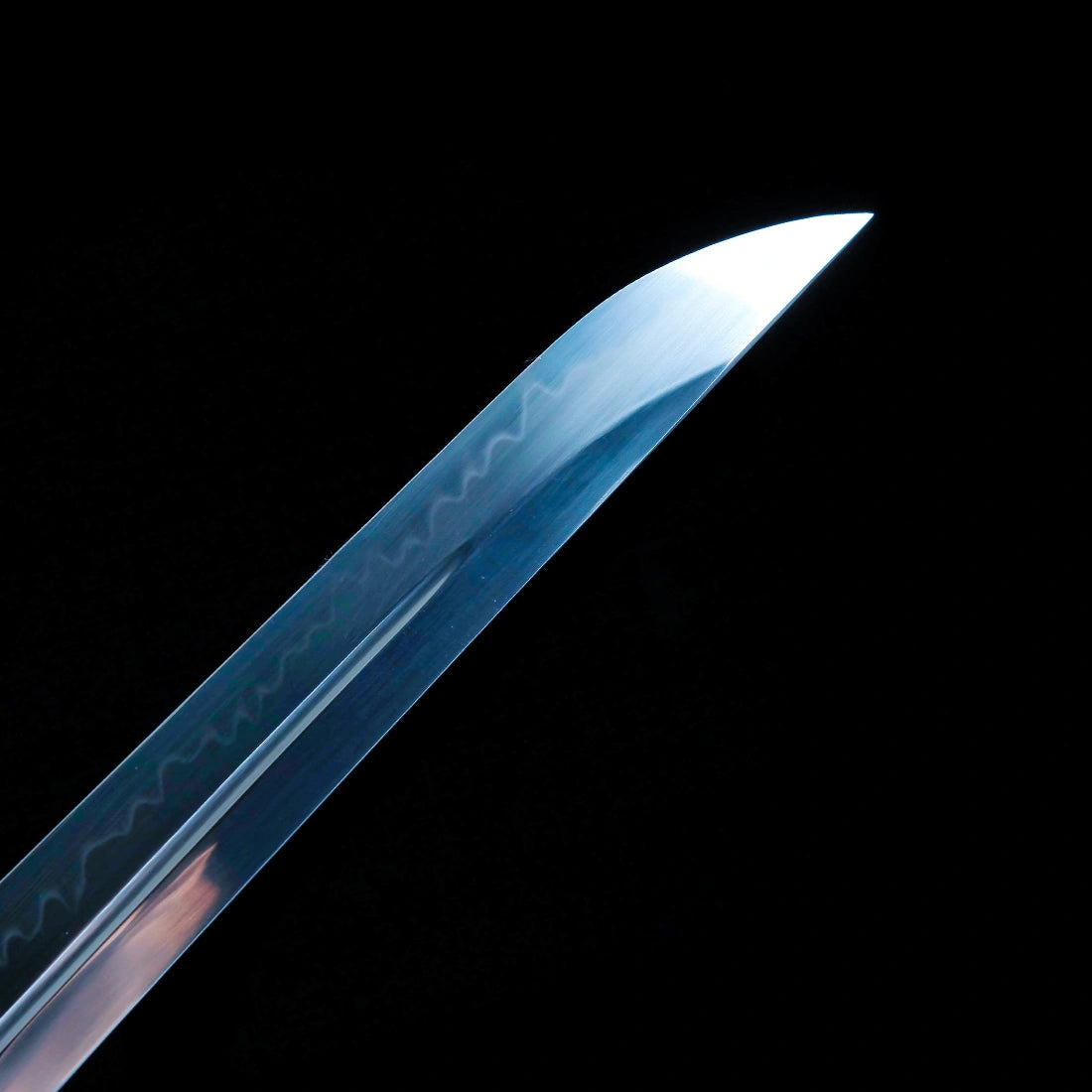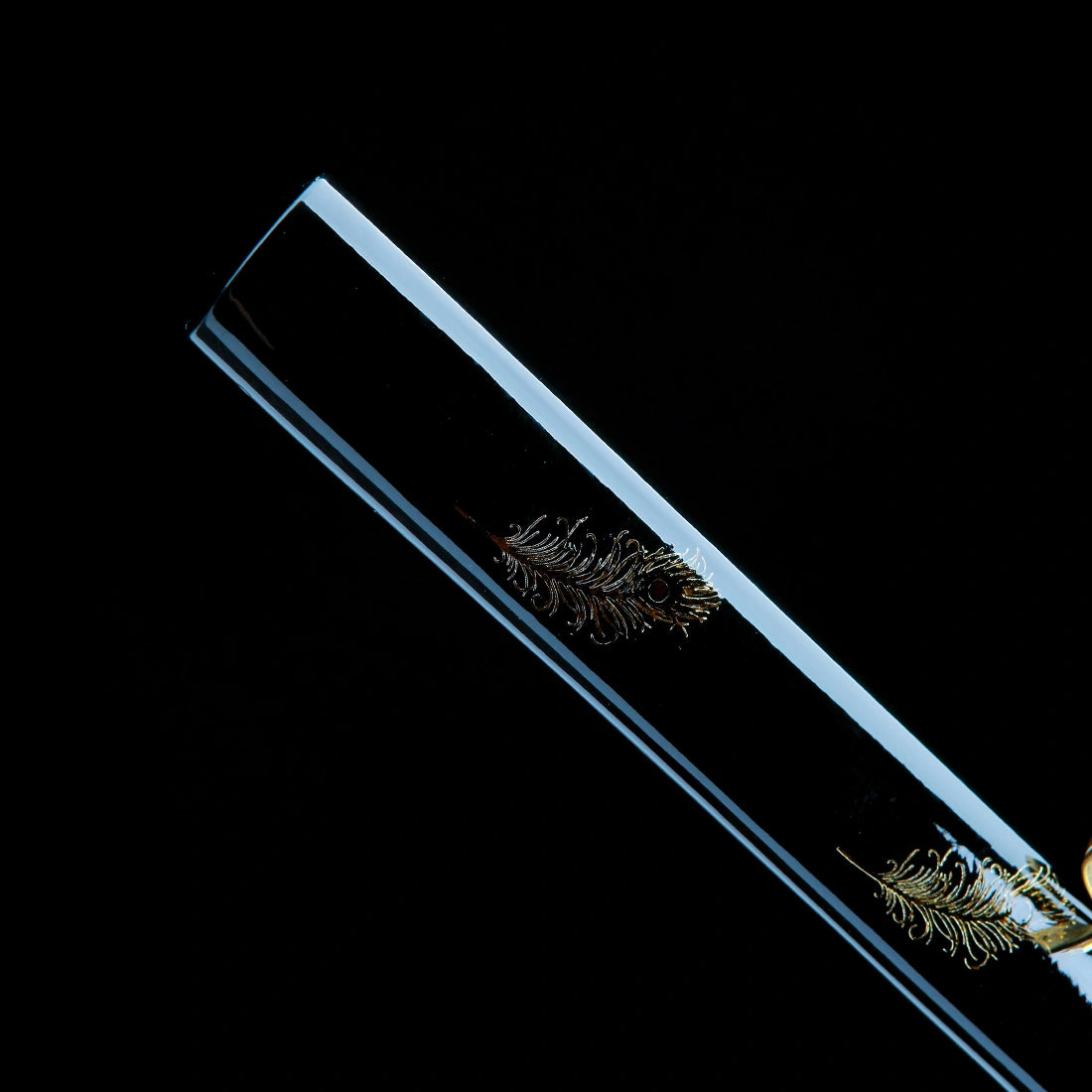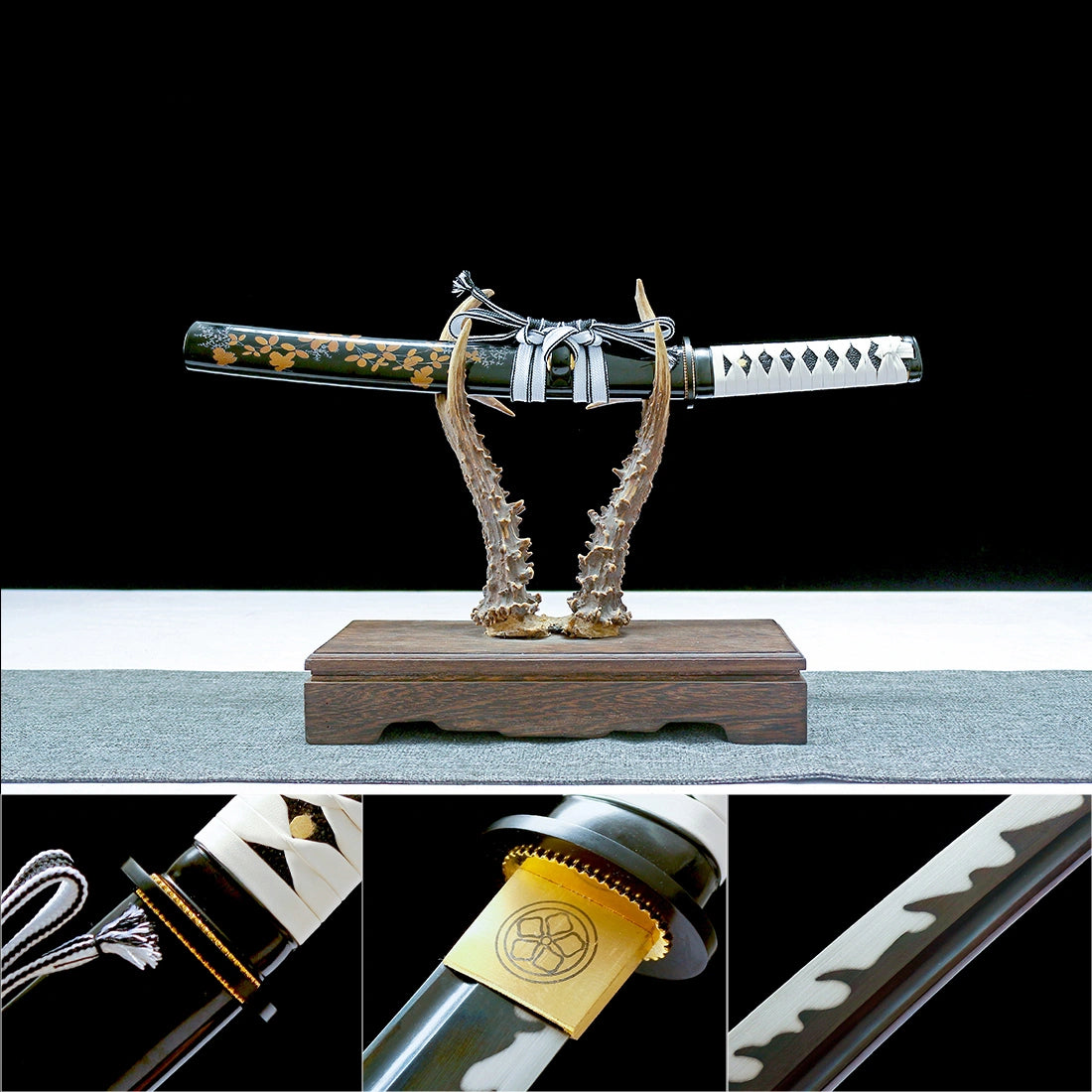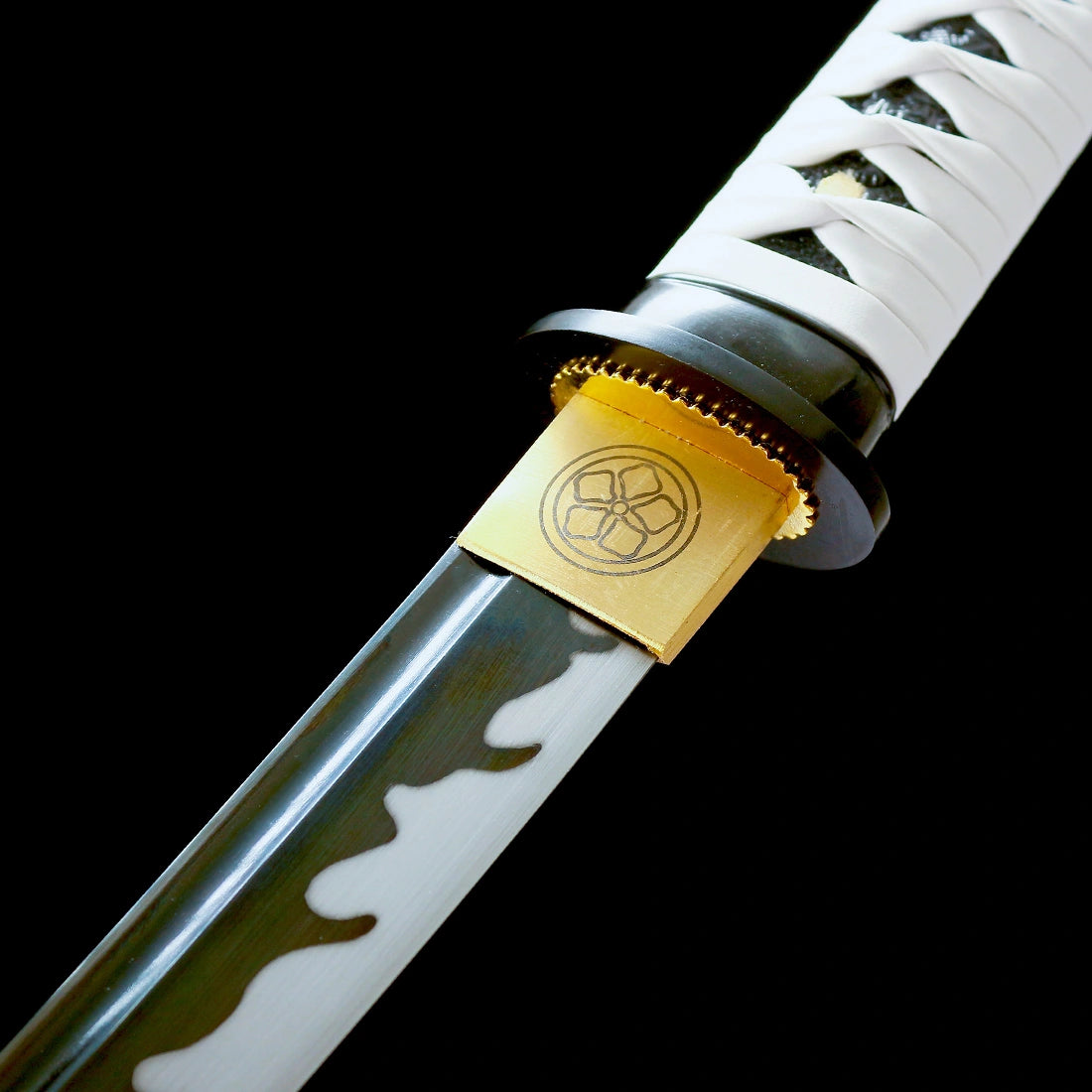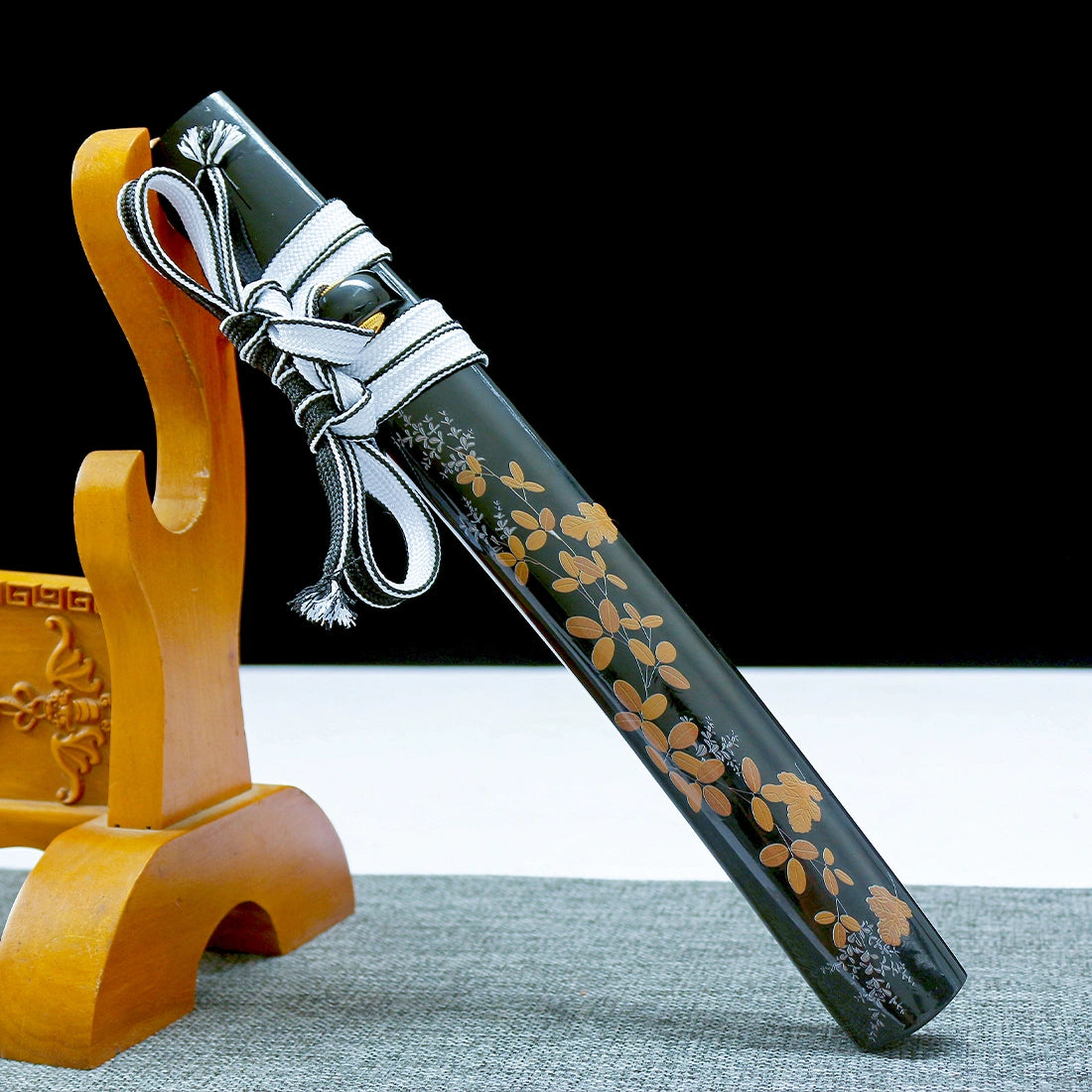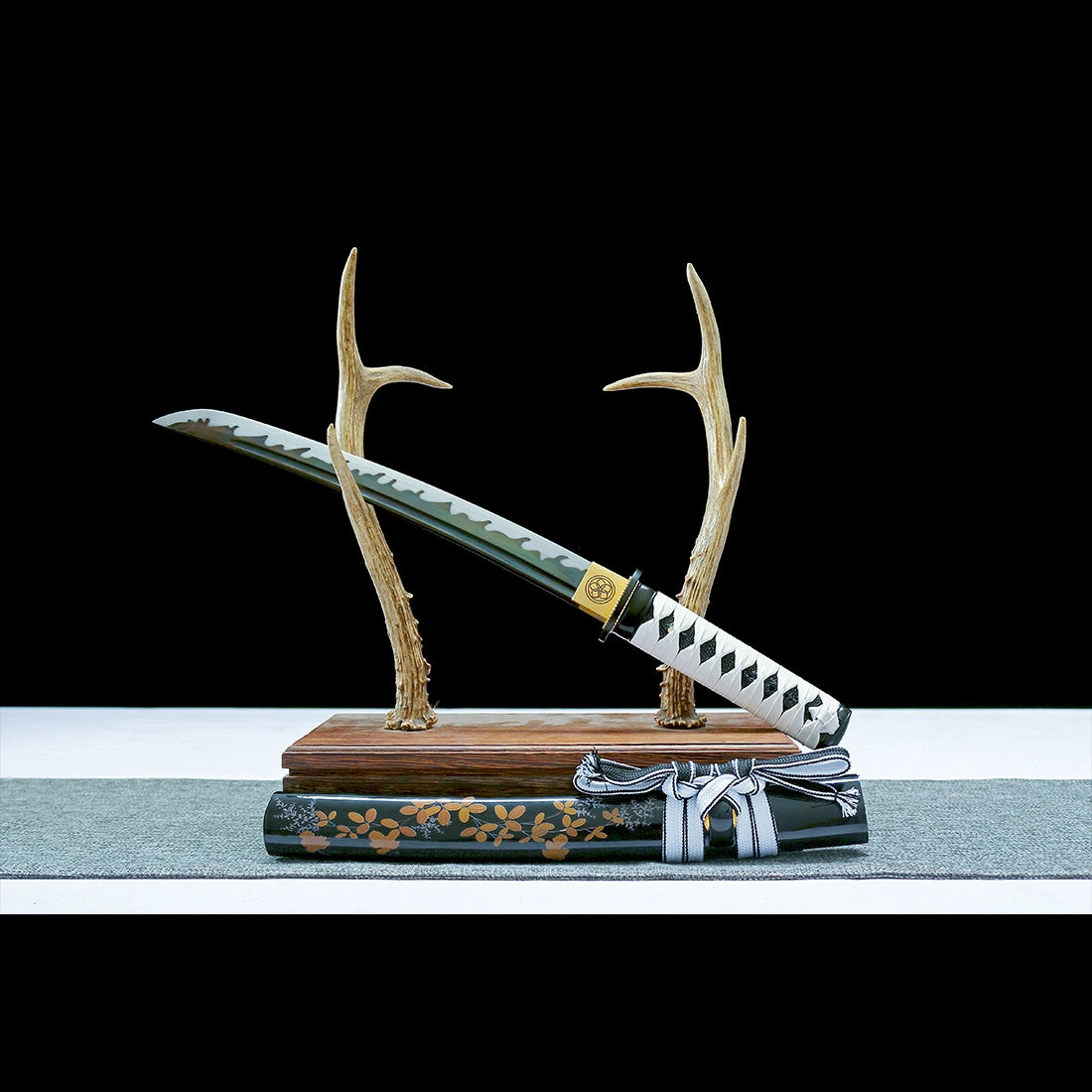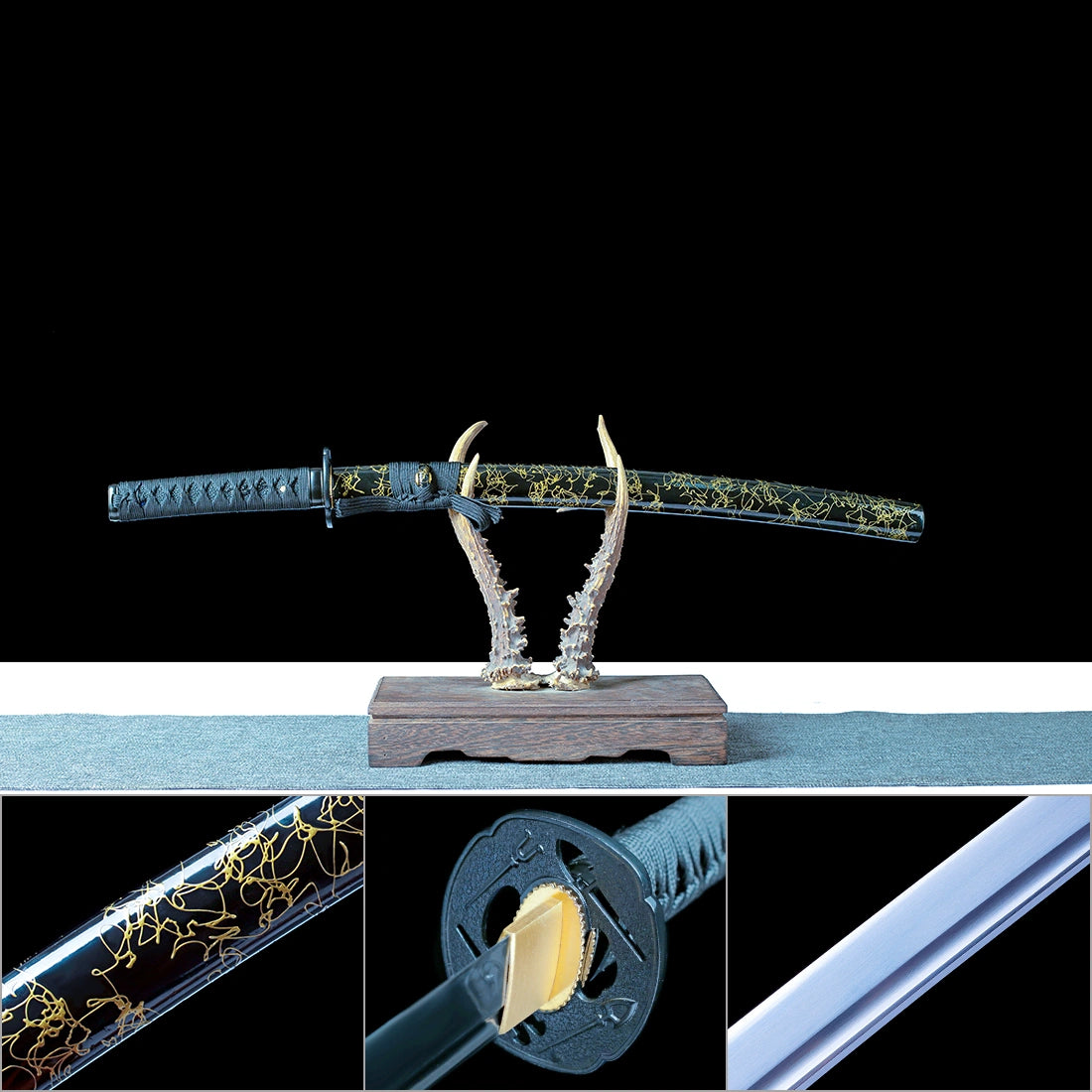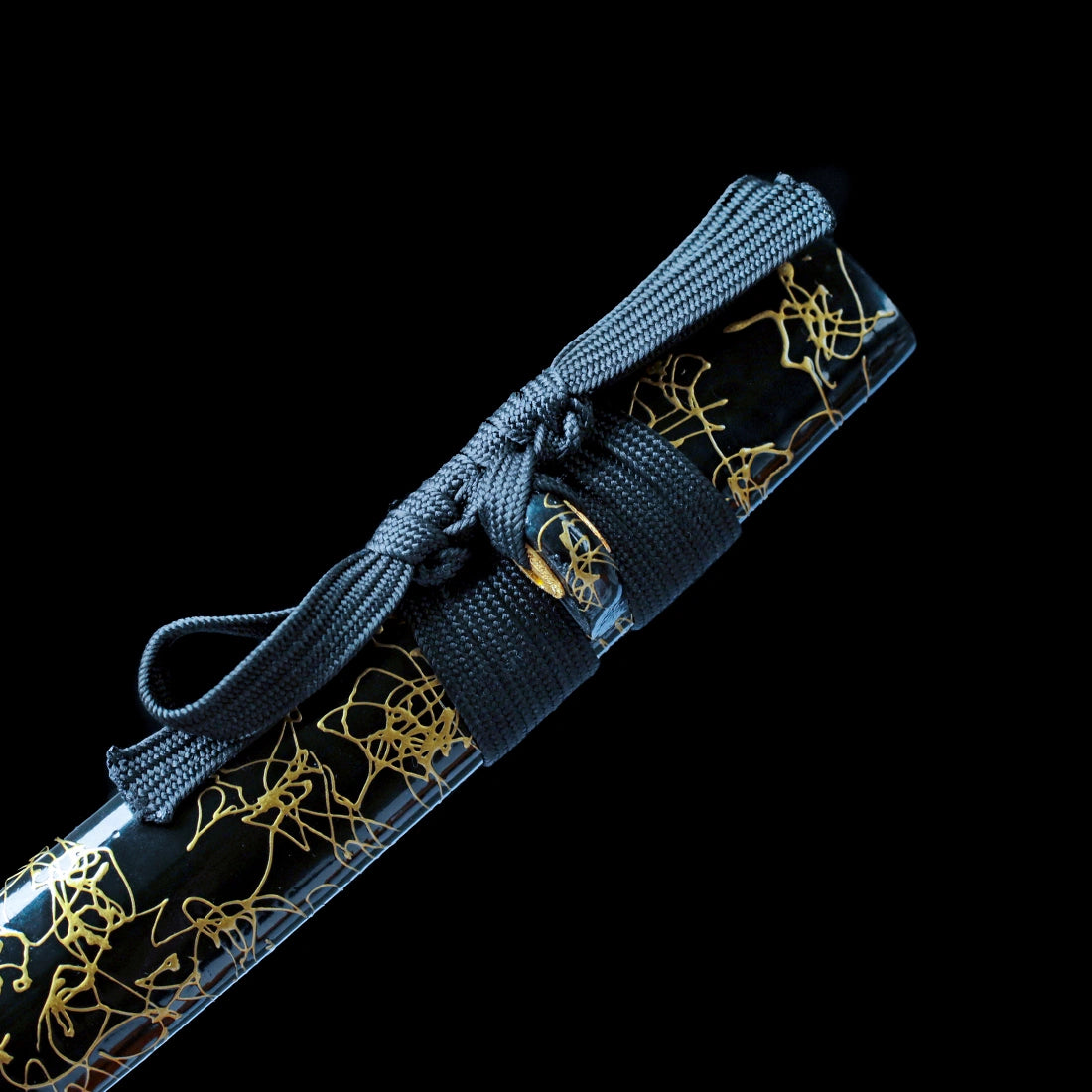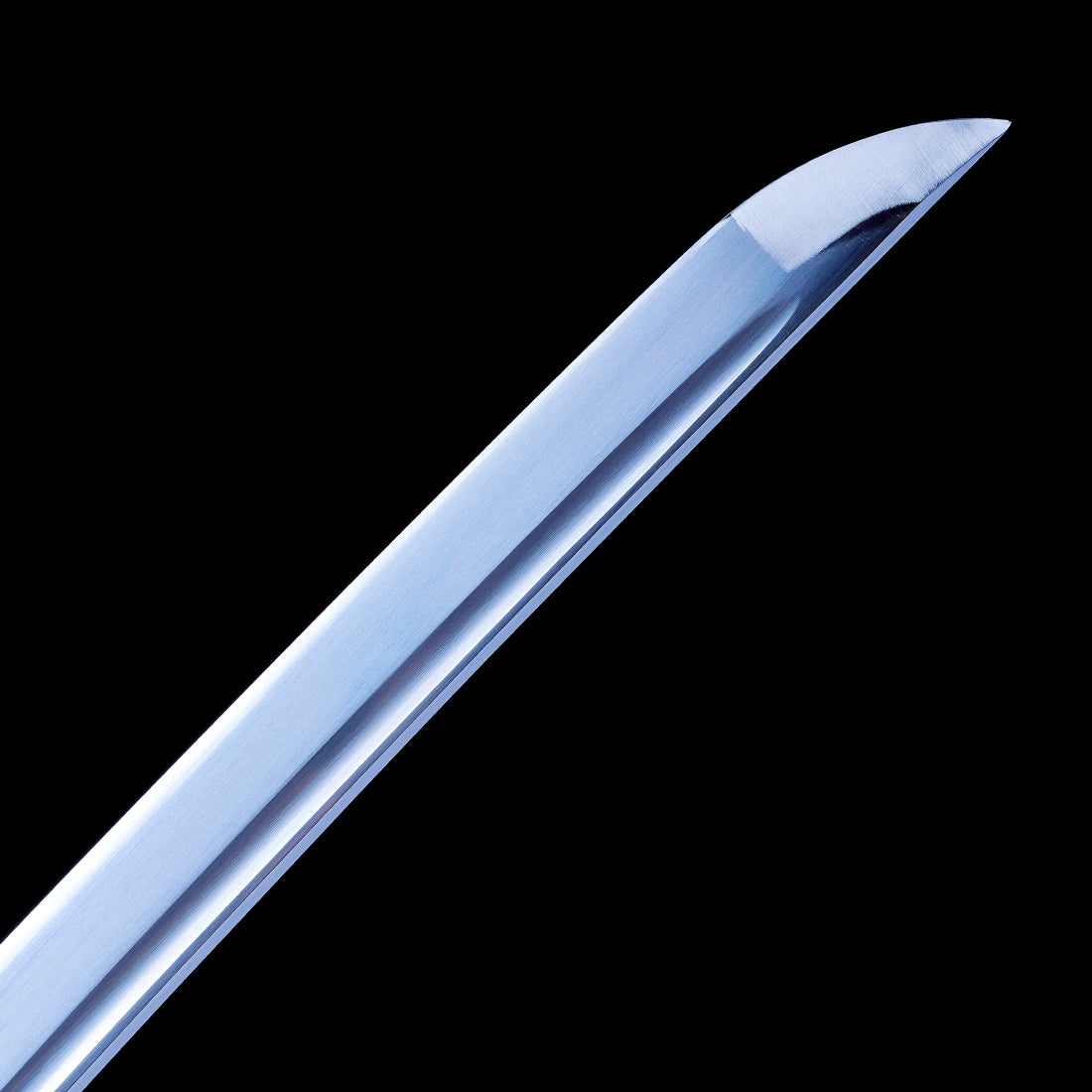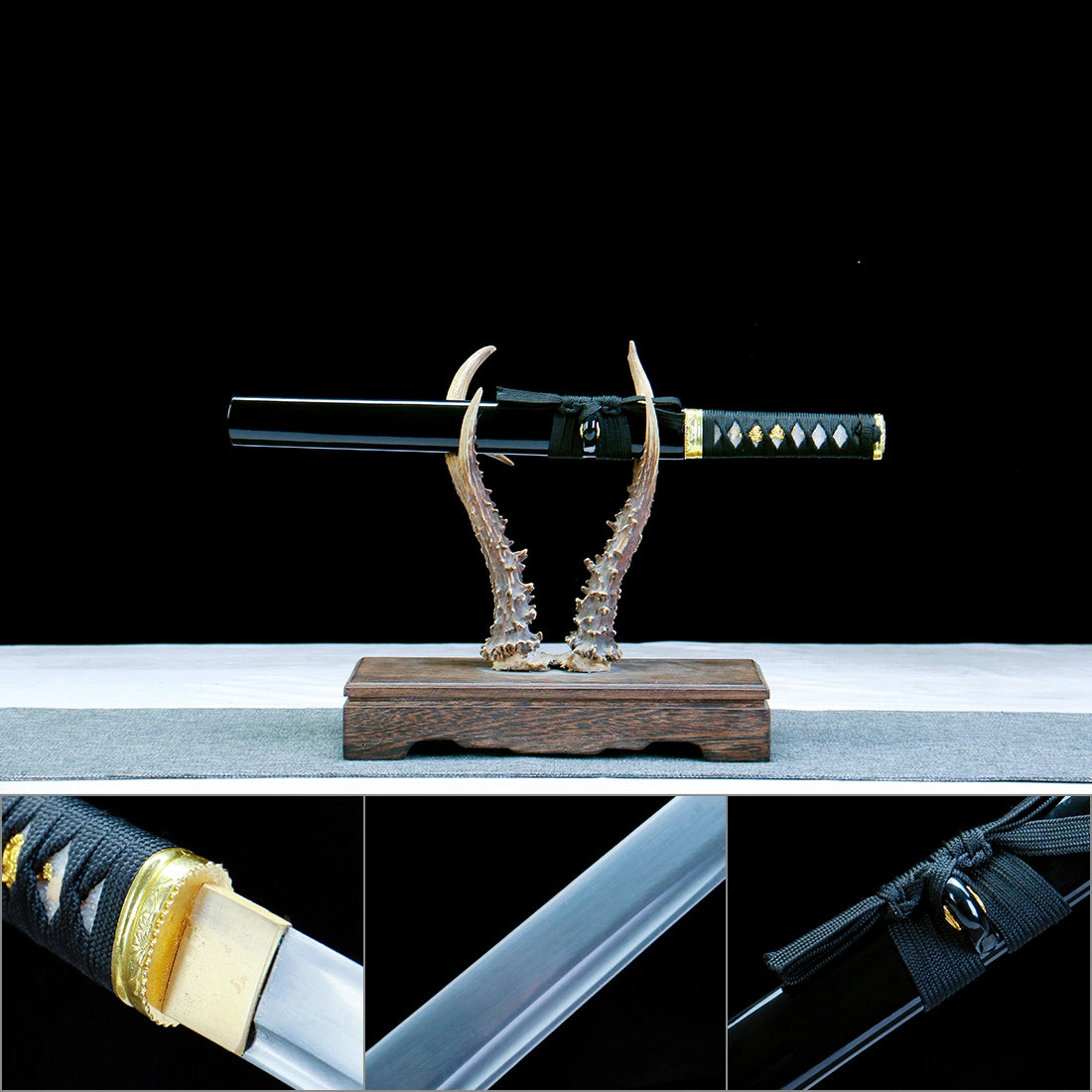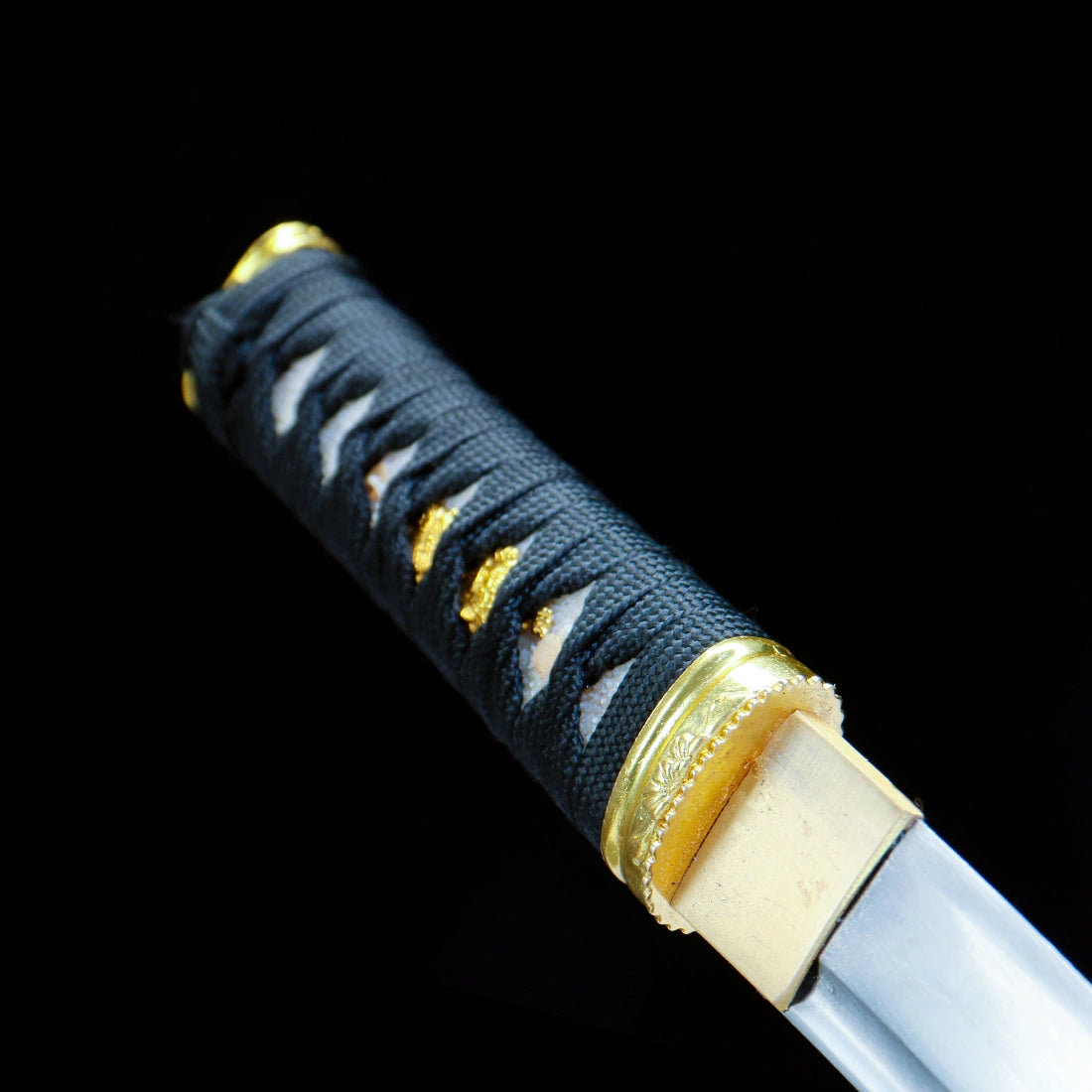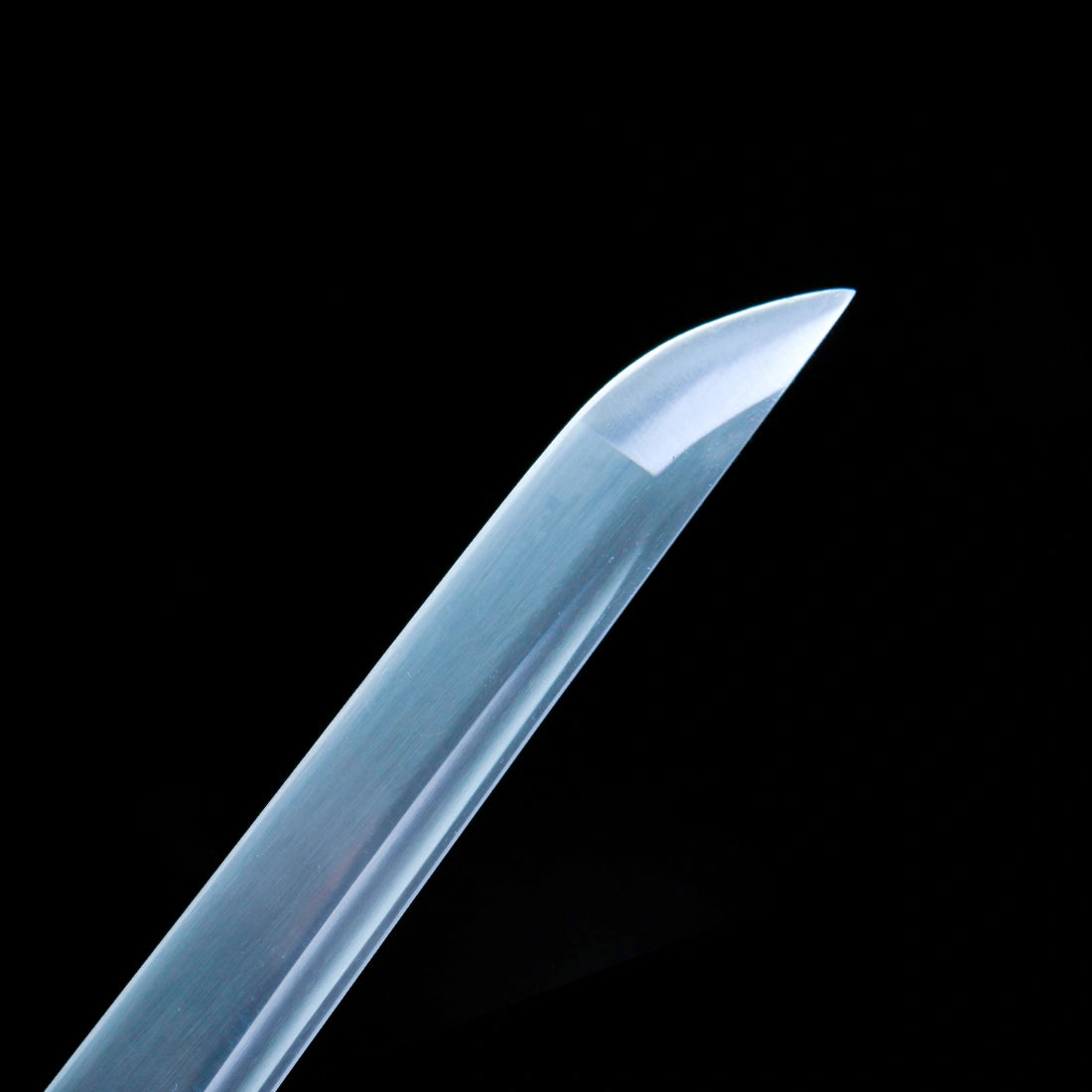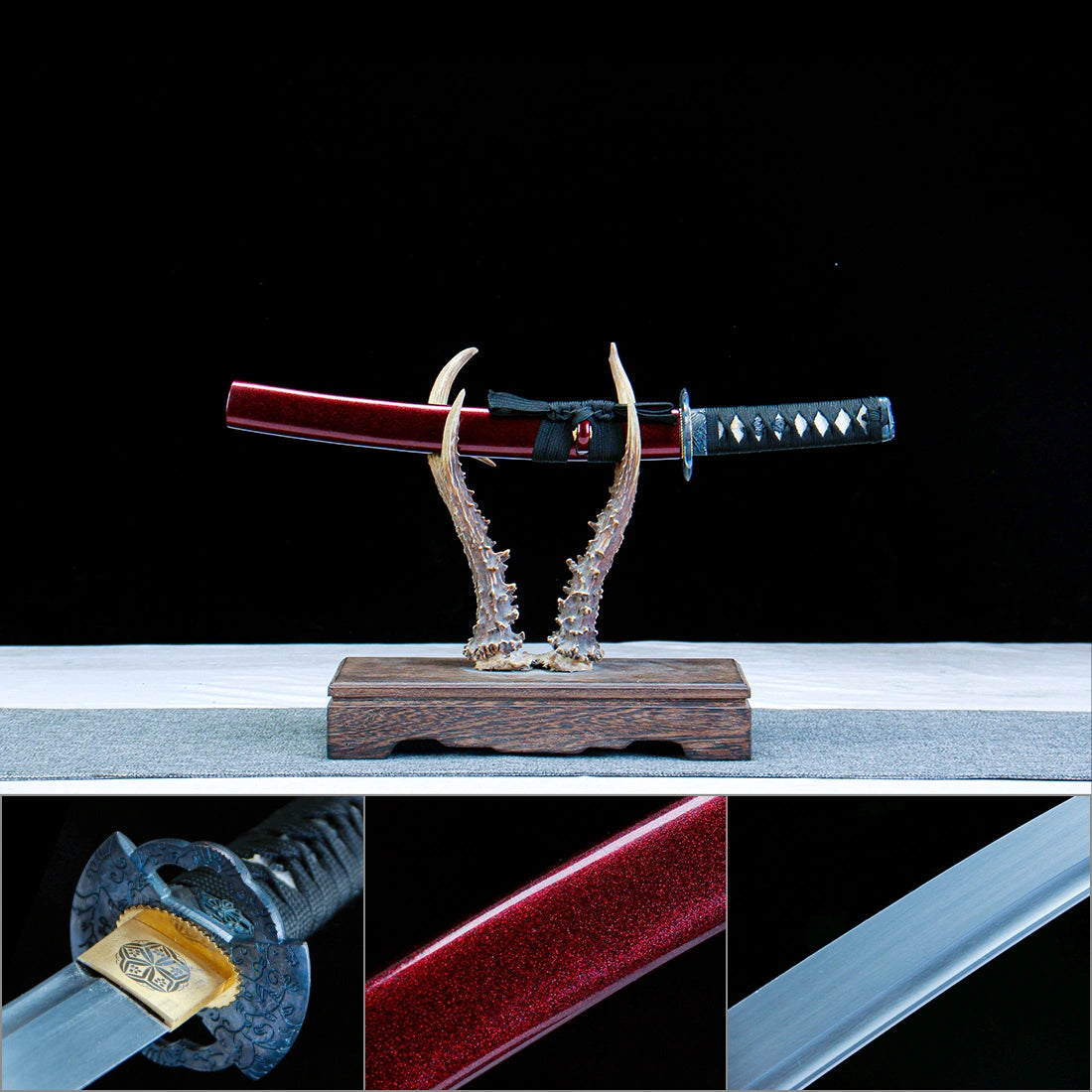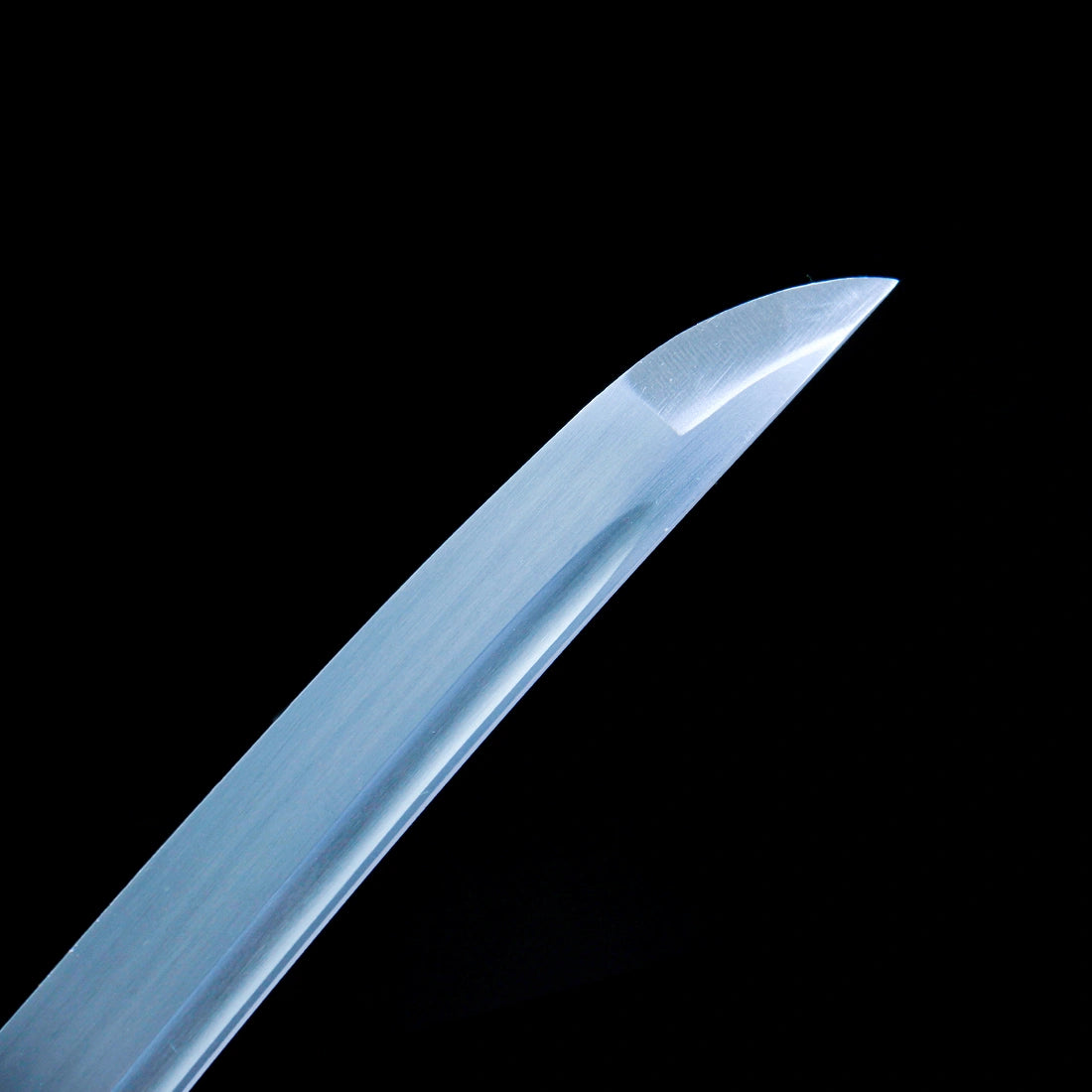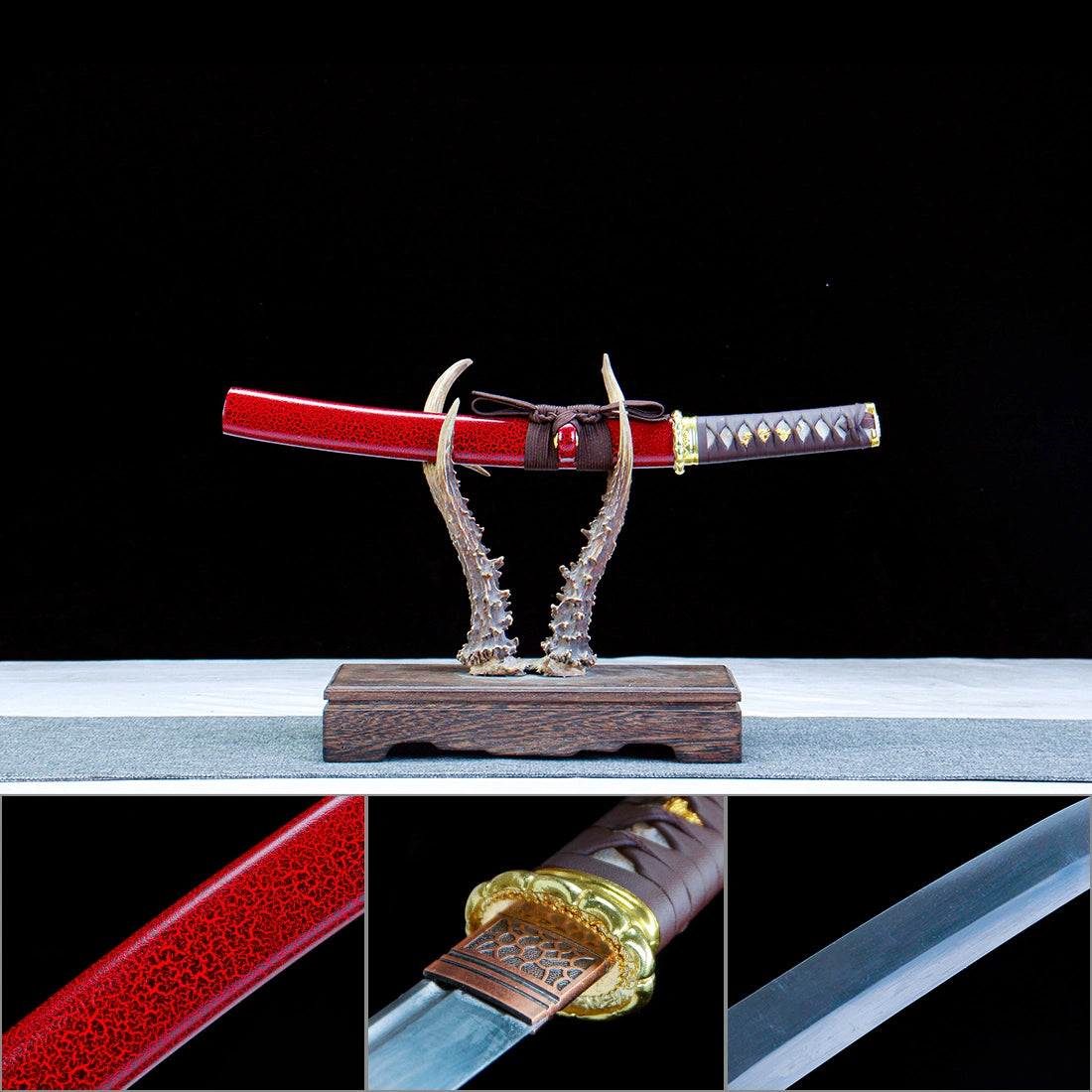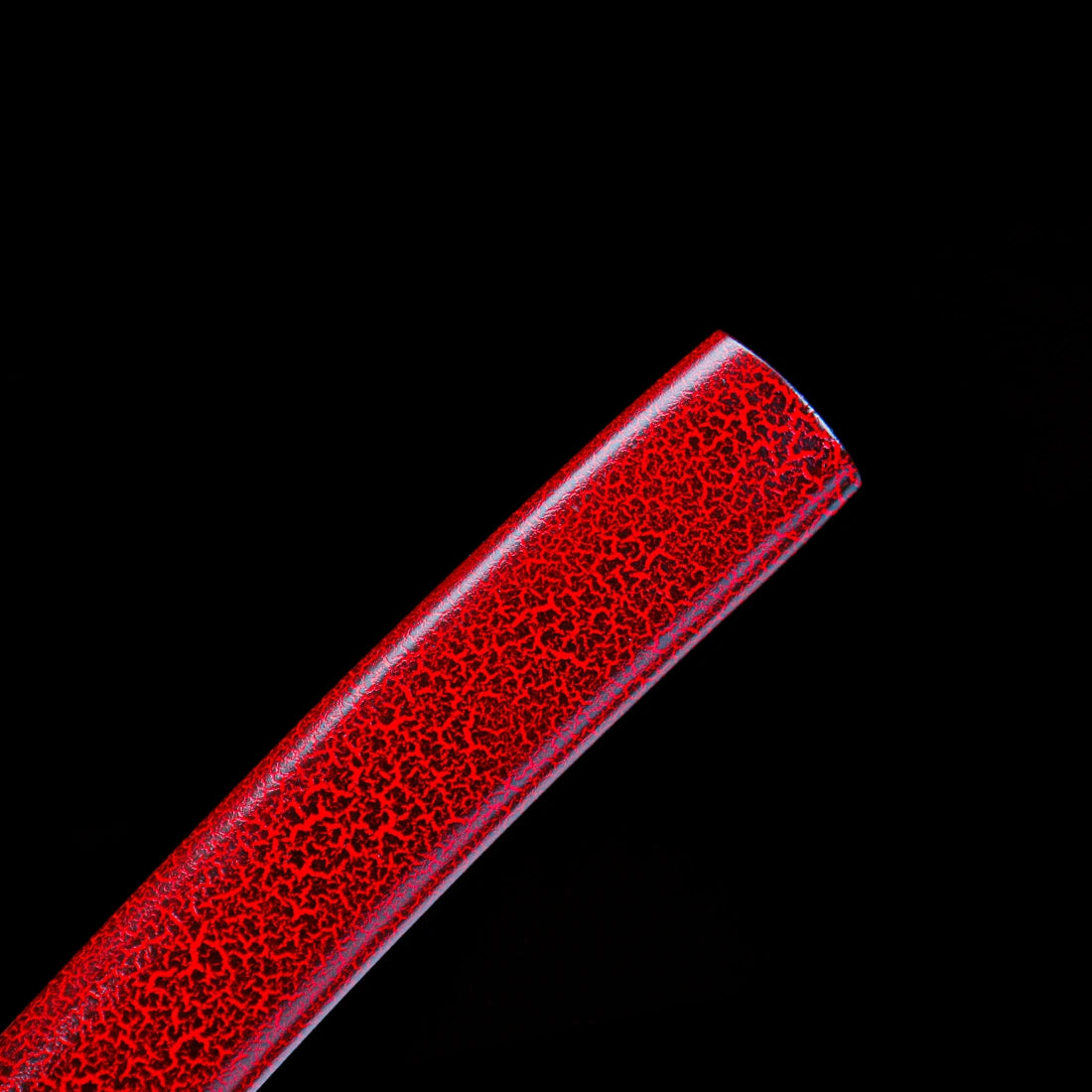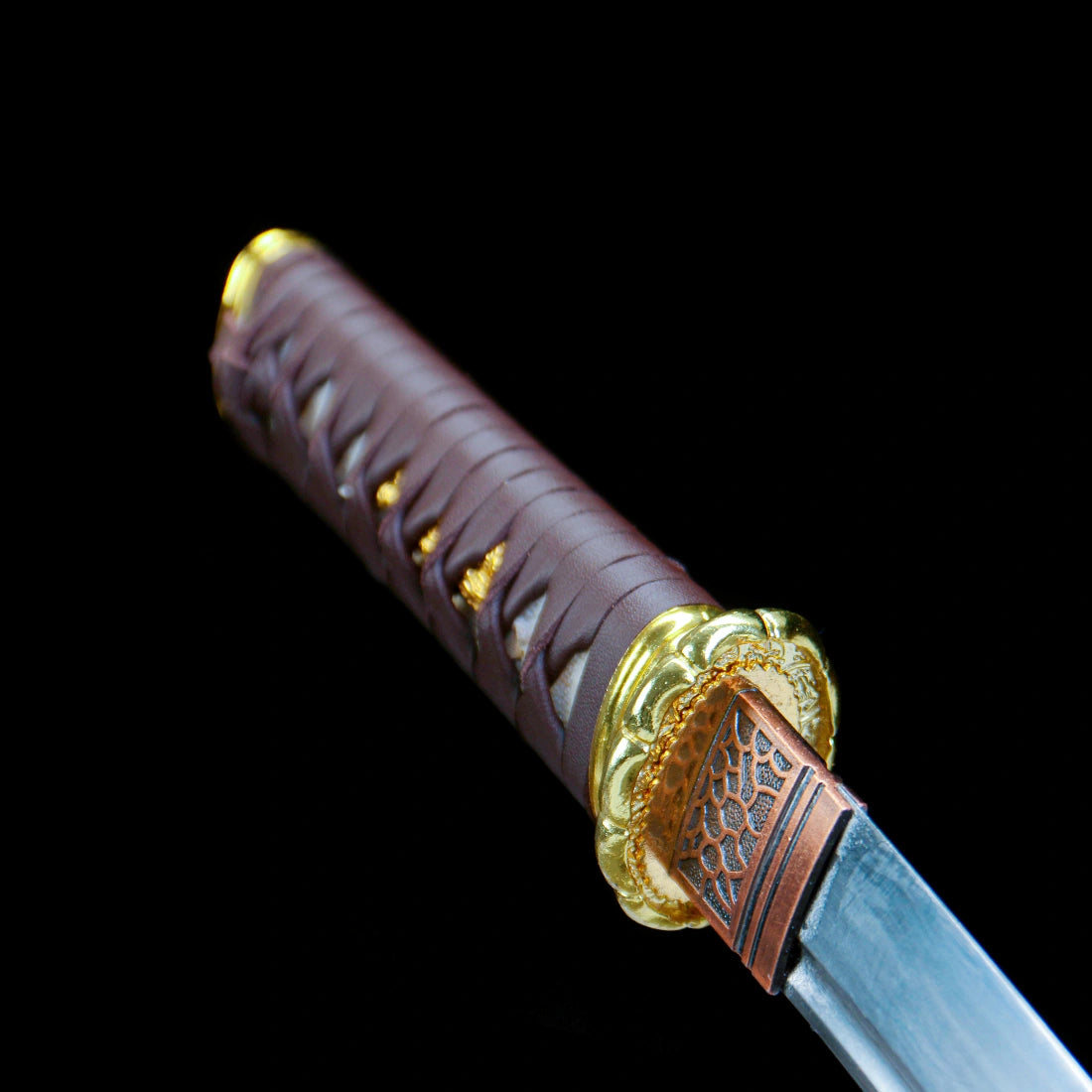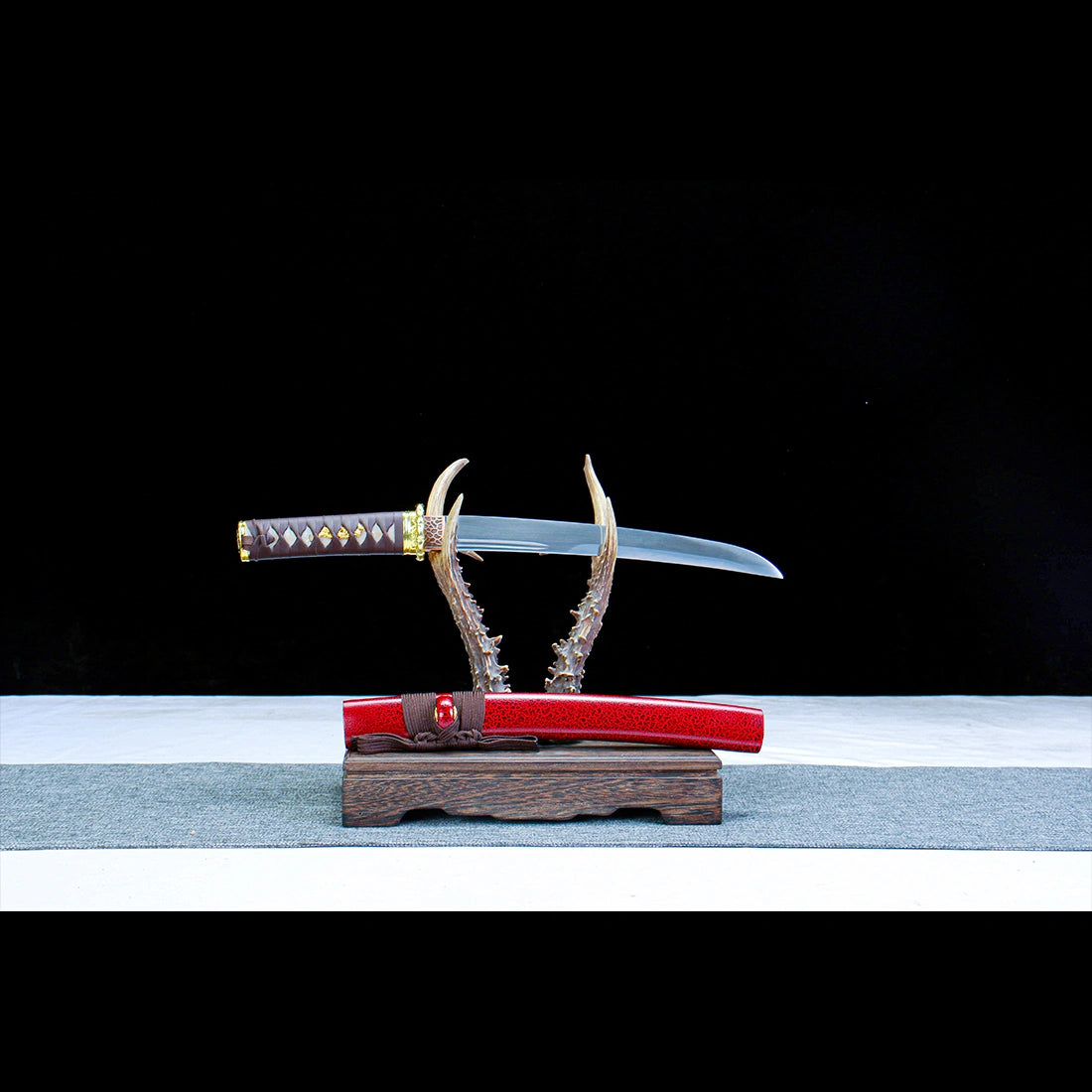Wakizashi sword stance
Mastering the Wakizashi Sword Stance: Key Techniques for Combat and Defense
The Wakizashi sword, with its compact yet powerful design, is a symbol of precision and skill in the art of swordsmanship. Traditionally used by Samurai as a secondary weapon alongside the katana, the Wakizashi sword’s smaller size allows for swift, close-quarters combat and rapid drawing for defense. Understanding the correct Wakizashi sword stance is essential for mastering its full potential in both attack and defense scenarios.
1. Standing Guard (Chudan-no-Kamae)
This neutral stance, known as Chudan-no-Kamae, is commonly used in both offense and defense. In this position, the Wakizashi sword is held at a mid-level, pointing forward with the blade angled slightly downward in front of the body. This stance offers balance, control, and the ability to respond quickly to both high and low attacks. It prepares the swordsman for swift strikes and effective defense.
2. High Guard (Jodan-no-Kamae)
Jodan-no-Kamae is an offensive stance where the Wakizashi sword is raised high above the head, preparing for powerful downward cuts. This stance allows for quick, overwhelming strikes, especially against an opponent with a longer weapon like the katana. Although it leaves the swordsman somewhat open, the aggressive nature of this stance can catch an opponent off guard and create opportunities for fast counterattacks.
3. Low Guard (Gedan-no-Kamae)
In Gedan-no-Kamae, the Wakizashi sword is held low, near the waist, with the tip of the blade pointing toward the ground. This stance is primarily defensive, used for blocking incoming strikes or readying for a low, sweeping cut. It allows the user to remain agile and prepare for attacks from both sides, especially in tight spaces or close combat situations.
4. Sideways Stance (Waki-no-Kamae)
Waki-no-Kamae is a more relaxed, sideways stance, often seen in Iaido and Kenjutsu. The Wakizashi sword is held in the sword hand with the tip facing backward at the side of the body. This position allows the swordsman to quickly draw and strike, especially when dealing with opponents coming from the side or at close range. It is an ideal stance for quick counters and evasive movements.
5. Ready Position (Issoku ittō-no-Mae)
Issoku ittō-no-Mae is a stance that blends elements of the katana’s Ittō-no-Kamae with the Wakizashi sword’s size. The sword is held in front, with the blade directed forward, ready for both quick strikes and rapid counters. This is a balanced stance for both offensive and defensive maneuvers, particularly effective when facing opponents at close range or multiple attackers.
Conclusion:
Mastering the Wakizashi sword stance is crucial for any martial artist seeking to wield this powerful weapon effectively. Each stance—whether for defense, offense, or counterattacking—offers distinct advantages, depending on the situation. The beauty of the Wakizashi sword lies in its ability to transition seamlessly between stances, making it a versatile weapon for various combat scenarios. With its compact design and refined techniques, the Wakizashi sword remains an essential part of the Samurai tradition and is still cherished by modern sword enthusiasts and collectors.
Wakizashi vs katana
Wakizashi vs Katana: Key Differences and Features
When it comes to traditional Japanese swords, two of the most iconic and widely recognized are the wakizashi and katana(samurai sword). While both are essential elements of the samurai’s arsenal, they are distinct in design, purpose, and usage. Here’s a breakdown of their key differences:
1. Purpose
- Wakizashi: The wakizashi sword was often used as a backup weapon. It was carried alongside the katana by samurai as part of the daisho (the pair of swords). It was used for close combat, as a secondary weapon, or for ceremonial purposes.
- Katana: The katana sword was the primary weapon of the samurai, known for its cutting power and precision. It was used for both combat and display, with its design optimized for quick drawing (nukitsuke) and efficient cutting.
2. Design and Handling
- Wakizashi: Due to its shorter length, the wakizashi sword is lighter and more maneuverable, making it ideal for one-handed use. It was often drawn quickly in close-quarters situations, such as in narrow hallways or while sitting.
- Katana: The katana sword is designed for two-handed use, offering more stability and control when performing wide, sweeping strikes. It requires a larger area to swing effectively, but its design allows for maximum cutting power.
3. Weight
- Wakizashi: Typically weighs between 1 to 1.1 kg (2.2 to 2.4 lbs). Its lighter weight allows for greater speed and ease of use during quick, defensive maneuvers.
- Katana: The katana sword typically weighs between 1.2 to 1.3 kg (2.6 to 2.9 lbs). The extra weight provides balance and power, making it more suited for powerful strikes and precise cutting in battle.
4. Cultural Significance
- Wakizashi: While smaller and less well-known than the katana, the wakizashi still holds significant cultural value. In samurai culture, the wakizashi sword was used for ceremonial purposes and as a symbol of status.
- Katana: The katana sword is the more iconic sword and holds a larger cultural and historical significance. It represents the spirit of the samurai and is often seen as a symbol of honor, strength, and discipline.
5. Carrying Style
- Wakizashi: The wakizashi was typically worn on the left side, alongside the katana. Together, they formed the daisho, signifying the samurai's status and readiness for both close and long-range combat.
- Katana: The katana sword was worn on the left side, with its edge facing upward, allowing the samurai to draw it quickly when needed. The wakizashi would be worn on the opposite side or slightly behind.
Conclusion:
You can consider adding both a wakizashi sword and a katana sword to your collection, or purchase a wakizashi sword on its own as a complementary piece to your Japanese sword collection. Both swords offer distinct qualities, reflecting the artistry, craftsmanship, and utility of Japanese sword-making traditions.
What is the wakizashi best used for?
What Is the Wakizashi Sword Best Used For? Key Purposes and Functions
The wakizashi sword is an iconic piece of Japanese weaponry, known for its versatility and vital role in samurai culture. While it may often be overshadowed by the longer katana, the wakizashi blade is a crucial weapon with multiple uses, both in battle and as part of the samurai's ceremonial gear. If you are interested in adding this remarkable blade to your collection, wakizashi for sale is available in various forms, each offering unique features for collectors and enthusiasts. Let’s explore what makes the wakizashi sword so significant.
1. Secondary Weapon
The wakizashi sword was traditionally carried alongside the katana as part of the daisho, which symbolizes the samurai's status. The wakizashi blade was primarily used as a secondary weapon when the katana could not be drawn quickly or was impractical for close combat. Its shorter size made it ideal for close-quarters fighting, allowing samurai to engage opponents in tight spaces. If you are interested in purchasing a wakizashi for sale, it’s important to choose one that offers balance and maneuverability.
2. Close-Quarters Combat
One of the key purposes of the wakizashi sword was its ability to excel in close-combat situations. With a blade typically ranging from 12 to 24 inches (30 cm to 60 cm), the Japanese wakizashi allowed samurai to perform quick, precise strikes in narrow spaces. This made it perfect for situations where a katana was too long or cumbersome. The wakizashi blade was especially useful for indoor combat or in confined spaces, providing a sharp, efficient weapon for swift action.
3. Ceremonial and Symbolic Role
In addition to its functional use, the wakizashi sword had significant cultural and ceremonial value in Japan. It was often used in important rituals and carried as a symbol of honor and status. For example, the wakizashi blade was used in the practice of seppuku (ritual suicide), serving as a final act of bravery. It also represented the samurai’s identity and was carried alongside the katana to complete the daisho, the traditional sword pairing. This symbolic role underscores the Japanese wakizashi’s importance beyond mere weaponry.
4. Protection While Sitting or Sleeping
The wakizashi sword was small and compact, making it perfect for wearing in situations where a larger sword like the katana would be impractical. Samurais could carry their wakizashi blade while sitting or even sleeping, ensuring they were always ready for defense. Its size and quick accessibility made it the ideal choice for close-quarters protection, especially in the case of sudden attacks.
5. As a Complement to the Katana
The wakizashi sword was a complementary weapon to the katana, designed to be wielded alongside it for optimal versatility. While the katana was often used for powerful, long-range strikes, the wakizashi sword excelled in situations requiring agility and speed. If you're considering adding a wakizashi for sale, you may choose to purchase it alongside a katana, or perhaps opt for a standalone Japanese wakizashi to enrich your collection of authentic Japanese swords.
Conclusion
The wakizashi sword is a critical piece of the samurai arsenal, blending functionality with cultural significance. Its shorter blade made it ideal for close-quarters combat, while its symbolic role in samurai culture adds depth to its value. Whether you are purchasing a wakizashi for sale to complete your daisho set or adding a wakizashi blade to your collection as a Japanese wakizashi, it serves as both a functional weapon and a profound tribute to Japan’s rich sword-making tradition.
Wakizashi vs tanto
Wakizashi Sword vs Tanto: Key Differences and Features
When it comes to traditional Japanese weapons, the wakizashi sword and tanto are both highly regarded and have distinct purposes and characteristics. While both play essential roles in the samurai’s armament, they differ in design, functionality, and usage. Here’s an in-depth look at their key features:
1. Purpose and Function
- Wakizashi Sword: The wakizashi sword is often used as a backup weapon. It is suitable for close combat or self-defense, particularly in confined spaces where a longer weapon may be cumbersome. Wakizashi sword can also serve ceremonial or symbolic purposes, representing the samurai's status and readiness for both offense and defense.
- Tanto: The tanto is primarily designed for close-range combat, primarily used for stabbing or cutting in very tight spaces. It is a more compact weapon, highly suitable for quick attacks or defensive maneuvers, especially when space is limited.
2. Design and Shape
- Wakizashi Sword: The wakizashi sword features a shorter, slightly curved blade, making it ideal for quick, precise cuts and strikes. Due to its reduced size, the wakizashi sword offers superior maneuverability, especially in tight quarters or situations where a longer blade would be less effective.
- Tanto: The tanto blade is typically straight, designed specifically for thrusting. It excels in quick, direct strikes and is well-suited for defensive actions or precision attacks in close combat.
3. Weight and Handling
- Wakizashi Sword: The wakizashi sword is lighter than larger swords, making it easier to handle, especially in one-handed use. Its design allows for greater speed, agility, and ease of movement during close-quarters combat.
- Tanto: The tanto is even lighter than the wakizashi sword, making it highly maneuverable. Its compact size allows for quick responses, making it an excellent choice for swift, tactical strikes and defense.
4. Cultural Significance
- Wakizashi Sword: Although smaller and less iconic than the katana, the wakizashi sword still holds a deep cultural and symbolic value. It represents the samurai’s status and readiness, and was used in certain ceremonies or as a symbol of honor. It is an essential tool in the samurai's armory, complementing the katana.
- Tanto: The tanto may not hold the same cultural significance as the wakizashi sword, but it was still highly respected in samurai culture. It was often used for discreet tasks, self-defense, or as a last-resort weapon.
5. Carrying Style
- Wakizashi Sword: The wakizashi sword was typically worn on the left side, easily accessible for quick drawing. It was an essential part of the samurai's armament and was often carried alongside the katana.
- Tanto: The tanto is typically worn at the waist or hidden in a bag or sash for quick access. Due to its small size, it is easier to conceal and carry discreetly.
Conclusion: Wakizashi Sword vs Tanto
Both the wakizashi sword and the tanto serve distinct purposes in a samurai's arsenal. The wakizashi sword is more versatile, designed for a variety of combat situations and often used as a backup weapon for self-defense, while the tanto is a more specialized tool, typically used for quick strikes or close-quarters combat.
If you’re considering adding a wakizashi sword or tanto to your collection, each offers unique features that showcase the skill and craftsmanship of traditional Japanese sword-making. Whether you decide to purchase a wakizashi sword to complement your katana or opt for a tanto as a focused weapon, both swords make valuable additions to any collection.
At AUTHENTICKATANA, you can find authentic wakizashi swords and tanto blades, each hand-forged to reflect the finest traditions of Japanese sword-making. If you're looking for an exquisite wakizashi sword or other Japanese blades, AUTHENTICKATANA offers a wide selection of premium weapons that bring the spirit of the samurai to your collection.
Custom wakizashi
Create Your Unique Custom Wakizashi Sword at AUTHENTICKATANA
If you're considering owning a custom wakizashi, then AUTHENTICKATANA is undoubtedly the best choice for you! One of the biggest advantages of customizing your wakizashi sword is the ability to personalize every detail. You can choose the blade material, handle design, guard (tsuba), and even the handle wrapping (tsuka-ito) to suit your personal style. Whether it's T10 carbon steel, Damascus patterned steel, or titanium-coated carbon steel, we can craft the perfect blade for you. Additionally, you can select your preferred colors, such as black, red, and more, making each wakizashi sword unique to you.
Owning a custom wakizashi means you possess a one-of-a-kind piece that’s truly exclusive. It's not just a wakizashi sword; it's a unique collector’s item that reflects your personal taste and style.
If you're interested in purchasing a custom wakizashi, AUTHENTICKATANA offers a wide range of custom options. You’ll have the opportunity to collaborate with our experienced artisans, who will carefully hand-forging a wakizashi sword tailored to your specifications! What's more, our custom service is priced similarly to the wakizashi sword we currently sell on our website, offering you great value for a one-of-a-kind piece.
The customization process is simple: just get in touch with us, for example, by sending an email. We will send you a catalog of all the wakizashi parts, allowing you to choose your preferred options. Once the design is finalized, we will begin crafting your unique, custom wakizashi!





